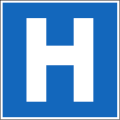Comparison of European road signs
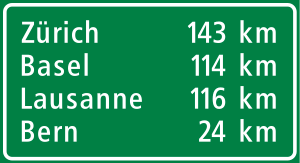
Despite an apparent uniformity and standardisation, European traffic signs present relevant differences between countries. However most European countries refer to the 1968 Vienna Convention on Road Signs and Signals — adopted in Europe by Albania, Austria, Belarus, Belgium, Bosnia and Herzegovina, Bulgaria, Croatia, the Czech Republic, Denmark, Estonia, Finland, France, Germany, Greece, Hungary, Italy, Latvia, Lithuania, Luxembourg, Macedonia, Montenegro, the Netherlands, Norway, Poland, Portugal, Romania, Russia, San Marino, Serbia, Slovakia, Slovenia, Sweden, Switzerland, Turkey,[1] Ukraine and the United Kingdom. The convention has not been adopted by Ireland, Moldova, or Spain.
Differences between European traffic signs
The main differences relate to
- graphic design details
- local regulatory significance
- the colour-coding of directional signs
- local language texts (sometimes bilingual)
- the meaning and colour-coding of horizontal road surface markings
Graphic differences
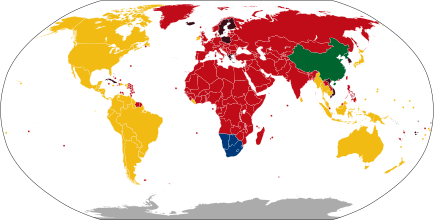
- Warning signs in Ireland are yellow and diamond-shaped (as in the Americas, Australasia, and some east Asian countries), and thus differ from the white or yellow, red-bordered, triangular signs found in the rest of Europe.
- The design of individual pictograms (tunnel, pedestrian, car, etc.), while broadly similar, often varies in detail from country to country.
- Type of arrows may be different.
- Fonts of written words
Major differences in colour codes
| Country | Motorways | Express-/ Speedways |
Motor- & Express-/ Speedways directions |
Primary roads | Secondary roads | Warning signs | Road works / Detours[n 1] | ||||||||||||||
|---|---|---|---|---|---|---|---|---|---|---|---|---|---|---|---|---|---|---|---|---|---|
| Name | Code | white on green |
white on blue |
n/a | white on green |
white on blue |
white on green |
white on blue |
white on green |
white on blue |
black on yellow |
black/red on white |
n/a | black on white |
white on blue |
Triangle on white |
Triangle on yellow |
Diamond on yellow |
on orange |
on yellow | |
| Austria | A | w/b | w/b | w/b | °w/g[n 2][n 3] | bl/w | × | bl/w | bl/y | ||||||||||||
| Switzerland | CH | w/g | w/g | w/g | w/b | bl/w | bl/w | bl/o | |||||||||||||
| Liechtenstein | LI | w/g | w/g | w/g | w/b | bl/w | bl/w | bl/o | |||||||||||||
| Czech Republic | CZ | w/g | w/b | w/g[n 4] | w/b[n 5] | w/b | bl/w | bl/w | bl/o | ||||||||||||
| Germany | D | w/b | w/b | w/b | bl/y | × | bl/w | bl/y | |||||||||||||
| Greece | GR | y+w/g | y+w/b | °y+w/g[n 6] | °y+w/b[n 7] | y+w/b | bl/w | bl/y | |||||||||||||
| France | F | w/b | w/b | w/b | °w/g[n 2] | bl/w | × | bl/w | °bl/y[n 1] | bl/o | |||||||||||
| Poland | PL | w/b | w/b | w/b | w/g | b/w | bl/o | bl/o | |||||||||||||
| Ireland | IE | w/b | × | w/b | w/g | bl/w | bl/y | bl/o | |||||||||||||
| Italy | I | w/g | w/b[n 8] | °w/g[n 6] | °w/b[n 7] | w/b | bl/w | bl/w | °bl/y[n 1] | bl/y | |||||||||||
| Netherlands | NL | w/b | w/b | w/b | w/b | w/b | bl/w | bl/y | |||||||||||||
| Norway | N | w/b | w/b | w/b | bl/y | × | bl/w | °bl/gg[n 1] | bl/o | ||||||||||||
| United Kingdom | UK | w/b | × | w/b | w/g | bl/w | bl/w | bl/y | |||||||||||||
| Legend: t/b – applied text/icon and background colour code (black, blue, green, gleaming green, orange, red, yellow, white) ° – partially applicable × – not applicable | |||||||||||||||||||||
- 1 2 3 4 Temporary signs
- 1 2 Specific meaning
- ↑ White-on-green is used in Austria to indicates locations like regions, city center, city districts.
- ↑ ???
- ↑ ???
- 1 2 For motorways only.
- 1 2 For expressways only.
- ↑ In Italy, the expressway sign looks like the motorway sign, but with a blue background instead of green one.
Warning signs
- In most European countries, it is indicated by a triangle with red borders and a white background.
- An amber background is used in Sweden, Greece, Finland, Iceland, the Republic of Macedonia, and Poland (in some other countries it means a provisional road work sign).
- Also, the yield sign/give way sign in Sweden, Finland, Iceland and Poland has a yellow background.
- In Ireland, it is indicated by a yellow diamond.
Road works/construction
- Many countries normally have adopted an orange or amber background.
- A yellow background is used in France, Italy, Finland, Iceland, Lithuania, Poland, Portugal, Spain, Sweden, and Romania.
Motorways
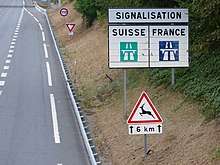
- White text on a blue background is used in Austria, Belgium, France, Germany, Hungary, Ireland, Lithuania (canceled changing from 1st of January 2020 in 3rd of October 2018), Luxembourg, the Netherlands, Norway, Poland, Portugal, Spain, and the United Kingdom.
- White text on a green background is used in Albania, Bosnia and Herzegovina, Bulgaria, Croatia, Cyprus, Czech Republic, Denmark, Finland, Greece, Italy, Lithuania, Republic of Macedonia, Romania, Russia, Serbia, Slovakia, Slovenia, Sweden, Switzerland, Turkey, and Ukraine.
Primary roads/Expressways
- White-on-blue (the same as motorways) is used in Belgium, Estonia, Latvia, and the Netherlands.
- White-on-blue is used in Belarus, Bulgaria, Cyprus, Czech Republic, Finland, Greece, Italy, Lithuania, Romania, Slovakia, Sweden, Switzerland, and Turkey.
- White-on-green is used in France, Hungary, Ireland, Poland, Portugal, and the United Kingdom.
- Black-on-yellow is used in Croatia, Bosnia and Herzegovina, Germany, Luxembourg, Norway, Serbia, and Slovenia.
- Red-on-white is used in Denmark (though white-on-blue on motorway exits and all overhead gantries)
- Black-on-white is used in Austria and Spain.
Secondary roads
- Black-on-white is used in France, Ireland, Bosnia and Herzegovina, Portugal, Spain, Switzerland, and the United Kingdom.
- In Bulgaria, Estonia, Finland, Germany, Hungary, Italy, Latvia, Lithuania, Romania, Serbia, Slovenia, and Sweden, black-on-white indicates only urban roads or urban destinations.
- White-on-green is used in Austria to indicates locations like regions, city center, city districts.[2]
- White-on-green is used in Spain to indicate street names, neighbourhoods, districts and other locations in a city.
Differences in meanings
- Sometimes similar signs have minor differences in meanings, following the local traffic codes.
- All European countries use the metric system (distances in kilometres or metres; speeds in kilometres per hour; heights, widths and lengths in metres; weights in tonnes) with the exception of the United Kingdom, where distances, speeds, heights and widths are still indicated in imperial measurements (miles or yards; miles per hour; feet and inches), with an optional indication in metres on some limit restriction signs. Weight limits are shown in metric tonnes with a lower case "t", although some older signs still use the imperial long ton indicated by either an upper case "T" or simply the word "ton".
Horizontal road surface markings
- Longitudinal lines (lanes and margins) and symbols on the carriageway are always white (but in Norway a yellow line separates two way traffic and in Ireland edge lines are yellow). Temporary markings are yellow in Germany, France, Italy, and the Netherlands, but red/orange in Switzerland and white in United Kingdom.
- A stop line is always represented by a white thick traversal continuous line, but a give way line may be represented by a white thick dashed line as rectangles (Germany, France) or by a double dashed line (United Kingdom) or by a white line of triangles (Austria, Italy, the Netherlands, Norway, and Switzerland).
- A disc (time-limited) parking place is identified by white lines in Germany and France and by blue lines in the Netherlands and Switzerland. A chargeable parking place is identified by white lines in Germany, France, the Netherlands, and Switzerland and by blue lines in Italy and Spain. A parking place reserved for disabled people is bordered in white in Germany, the Netherlands, Spain and the United Kingdom; in yellow in Italy and Switzerland; and in blue in France. Other reserved parking places (bus, taxis) are bordered with yellow lines in Italy, Switzerland, and the United Kingdom, but with white lines in Germany.
- The prohibition of roadside parking can be indicated by a yellow continuous line (Austria, the Netherlands, Spain, and the United Kingdom), by a yellow dashed line with X's (Switzerland), a white continuous line (Italy), or a dashed white line (France); or else by black-and-white (the Netherlands) or a black-and-yellow (Italy) kerb markings. Only in the United Kingdom does a double yellow line (as well as a white zig-zag line in the vicinity of pedestrian crossings) mean "no parking at any time".
- The prohibition of stopping / waiting is indicated in Switzerland by a yellow continuous line, and in (certain cities of) the United Kingdom by a red continuous line (with double red lines extending the meaning to "no stopping at any time). In the United Kingdom a yellow zig-zag line near hospitals, police stations, and schools means "no stopping".
Different typefaces in texts
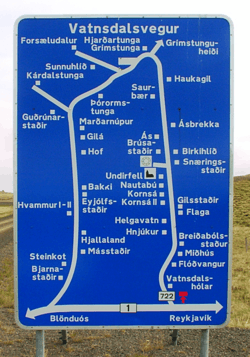
This list is incomplete. You can help by adding missing countries or typeface.
- Albania and Italy use the Alfabeto normale typeface (with the narrow variant Alfabeto stretto), a heavier version of the British Transport typeface.
- Albania has recently started using Arial Narrow Bold typeface.
- Austria and Slovakia use the TERN typeface. In the past, Austria used the Austria Mittelschrift and Engschrift typefaces until 2010. Slovakia used the Universal Grotesk typeface until 2014.
- Belarus, Lithuania, Russia and Ukraine use typefaces based on one specified in a Soviet standard ГОСТ 10807–78. In Belarus, the according standard is СТБ 1140–99. In Ukraine, it is ДСТУ 4100–2002. In Russia, it is ГОСТ Р 52290–2004.
- Belgium, Bosnia and Herzegovina, Bulgaria, Croatia, Luxembourg, Macedonia, Montenegro, Romania, Slovenia, and Serbia use the SNV typeface. Switzerland used this typeface until 2003.
- Cyprus, Greece, Iceland, Ireland, Turkey, Portugal, and the United Kingdom use the Transport typeface. (Motorway typeface is used on United Kingdom motorways)
- Denmark uses the Dansk Vejtavleskrift typeface. The typeface is derived from the British Transport typeface.
- Estonia and Moldova use the Arial Narrow Bold in mixture with Helvetica typeface.
- Finland uses a typeface developed in the 1960s by the former national board of roads and waterways.[3]
- France uses the Caractères typeface.
- Germany, Czech Republic and Latvia use the DIN 1451 typeface.
- Greece used a modified version of the British Transport typeface and, today, uses a modified version of DIN 1451.
- Hungary does not use a defined typeface as the letters are defined one-by-one in the national regulation. The typeface resembles the DIN 1451 typeface closely.[4]
- Luxembourg uses Arial (Bold), Caractères Italic, DIN 1451, and the SNV typefaces, often inconsistently.
- Turkey and Ukraine use the FHWA typeface.
- Spain uses two typefaces: Autopista (derived from FHWA series E modified) for motorways and Carretera Convencional (also known as CCRIGE or Traffic Type Spain D[5]) for other situations. The typeface Carretera Convencional is derived from the British Transport typeface, and is almost identical to the Italian Alfabeto Normale.
- The Netherlands uses typefaces derived from FHWA typeface: ANWB/RWS Cc (narrow), Dd (medium) and Ee (wide).
- Norway uses the Trafikkalfabetet typeface.
- Poland uses the Drogowskaz typeface.
- Sweden uses the Tratex typeface.
- Switzerland uses the ASTRA-Frutiger typeface since 2003.
In Albania, Andorra, Belarus, Czech Republic, Estonia, Finland, France, Italy, Latvia, Lithuania, Moldova, Monaco, Russia, San Marino, Slovakia, Sweden, and Ukraine, destinations on direction signs are written in capital letters. In Ireland, they are written in capital letters in English and in lowercase letters in Irish. In Greece, Luxembourg, and Switzerland both capital and lowercase are used.
Table of traffic signs comparison
Priority
Austria |
Belgium |
Czech Republic |
Denmark |
Estonia |
Finland |
France |
Germany |
Greece |
Hungary |
Iceland |
Ireland |
Italy |
Luxembourg |
Netherlands |
Norway |
Poland |
Portugal |
Romania |
Russia & |
Slovakia |
Slovenia |
Spain |
Sweden |
Switzerland & Liechtenstein |
Turkey |
Ukraine |
United Kingdom | |
|---|---|---|---|---|---|---|---|---|---|---|---|---|---|---|---|---|---|---|---|---|---|---|---|---|---|---|---|---|
| Give Way / Yield | 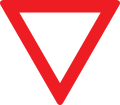 |
 |
 |
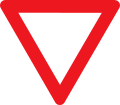 |
 |
 |
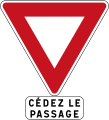 |
 |
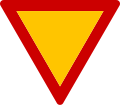 |
 |
 |
.svg.png) or .svg.png) |
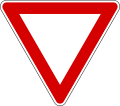 |
 |
 |
 |
 |
 |
 |
 |
 |
 |
 |
 |
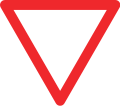 |
 |
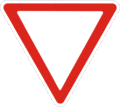 |
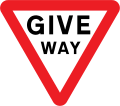 or .svg.png) |
| Stop | 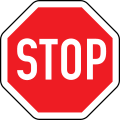 |
 |
 |
 |
 |
 |
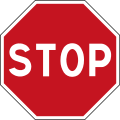 |
 |
 |
 |
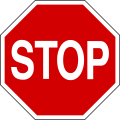 |
 |
 |
 |
 |
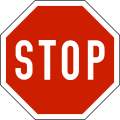 |
 |
 |
 |
 |
 |
 |
 |
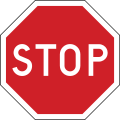 |
 |
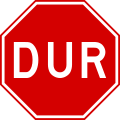 |
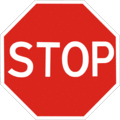 |
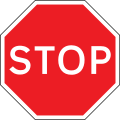 |
| Priority road | 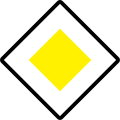 |
 |
 |
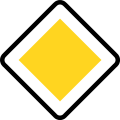 |
 |
 |
 |
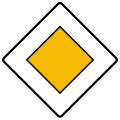 |
 |
 |
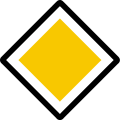 |
NOT USED |
 |
 |
 |
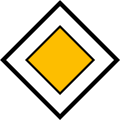 |
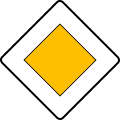 |
 |
 |
 |
 |
 |
 |
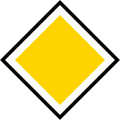 |
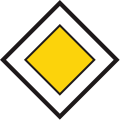 |
 |
 |
NOT USED |
| End of priority road | 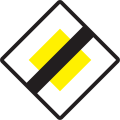 |
 |
 |
 |
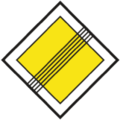 |
 |
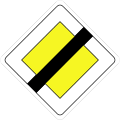 |
 |
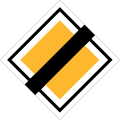 |
 |
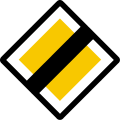 |
NOT USED |
 |
 |
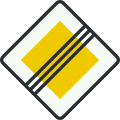 |
 |
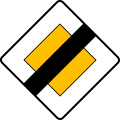 |
 |
 |
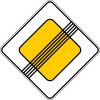 |
 |
 |
 |
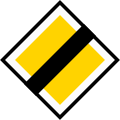 |
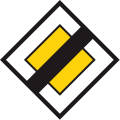 |
 |
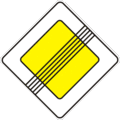 |
NOT USED |
| Give way to oncoming traffic | 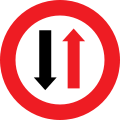 |
 |
 |
 |
 |
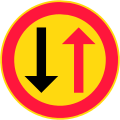 |
 |
 |
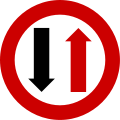 |
 |
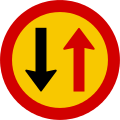 |
NOT USED |
 |
 |
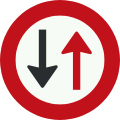 |
 |
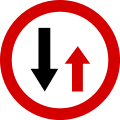 |
 |
 |
 |
 |
 |
 |
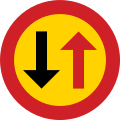 |
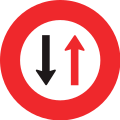 |
 |
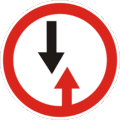 |
 |
| Priority over oncoming vehicles |  |
 |
 |
 |
 |
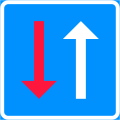 |
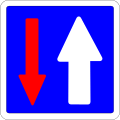 |
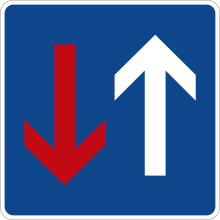 |
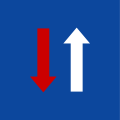 |
 |
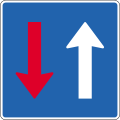 |
NOT USED |
 |
 |
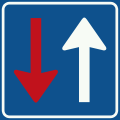 |
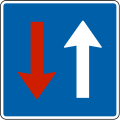 |
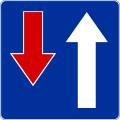 |
 |
 |
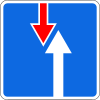 |
 |
 |
 |
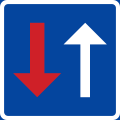 |
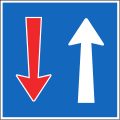 |
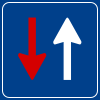 |
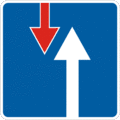 |
 |
| Austria | Belgium | Czech Republic |
Denmark | Estonia | Finland | France | Germany | Greece | Hungary | Iceland | Ireland | Italy | Luxembourg | Netherlands | Norway | Poland | Portugal | Romania | Russia & Belarus |
Slovakia | Slovenia | Spain | Sweden | Switzerland & Liechtenstein |
Turkey | Ukraine | United Kingdom |
Warning
| Austria | Belgium | Czech Republic |
Denmark | Estonia | Finland | France | Germany | Greece | Hungary | Iceland | Ireland | Italy | Luxembourg | Netherlands | Norway | Poland | Portugal | Romania | Russia & Belarus |
Slovakia | Slovenia | Spain | Sweden | Switzerland & Liechtenstein |
Turkey | Ukraine | United Kingdom | |
|---|---|---|---|---|---|---|---|---|---|---|---|---|---|---|---|---|---|---|---|---|---|---|---|---|---|---|---|---|
| Give Way ahead |  |
 |
 |
 |
 |
 |
 |
 |
 |
 |
 |
 |
 |
 |
 |
 |
 |
 |
 |
 |
 |
 |
 |
 |
 |
 |
 |
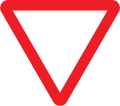 |
| Stop ahead |  |
 |
 |
 |
 |
 |
 |
 |
 |
 |
 |
 |
 |
 |
 |
 |
 |
 |
 |
 |
 |
 |
 |
 |
 |
 |
 | |
| Traffic signals ahead |  |
 |
 |
 |
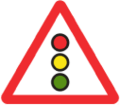 |
 |
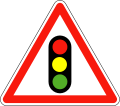 |
 |
 |
 |
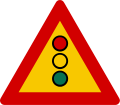 |
 |
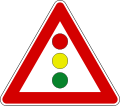 or 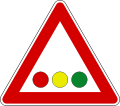 |
 |
 |
 |
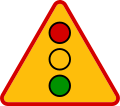 |
 |
 |
 |
 |
 |
 |
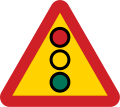 |
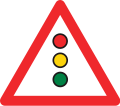 |
 |
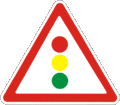 |
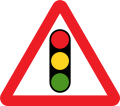 |
| Roundabout ahead | 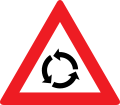 |
NOT USED |
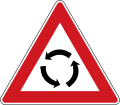 |
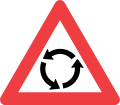 |
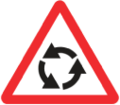 |
 |
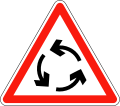 |
NOT USED |
 |
 |
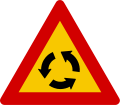 |
 or  |
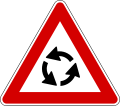 |
 |
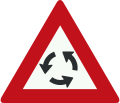 |
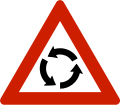 |
 |
 |
 |
 |
 |
 |
 |
 |
REPLACED by sign no. 4.54 [note 1] |
 |
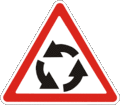 |
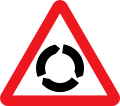 |
| Two-way traffic ahead | 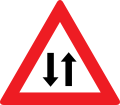 |
 |
 |
 |
 or  |
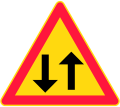 |
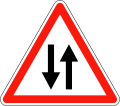 |
 |
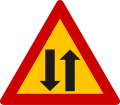 |
 |
 |
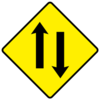 or  |
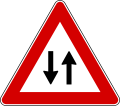 |
 |
 |
 |
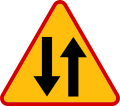 |
 |
 |
 |
 |
 |
 |
 |
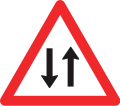 |
 |
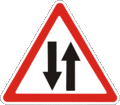 |
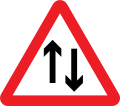 or 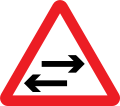 |
| Traffic queues likely ahead |  |
 |
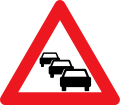 |
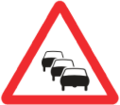 |
 |
 |
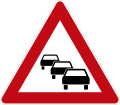 |
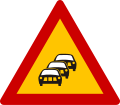 |
 |
NOT USED |
 |
 |
 |
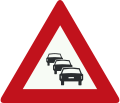 |
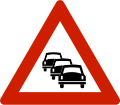 |
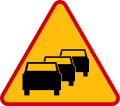 |
 |
 |
 |
 |
 |
 |
 |
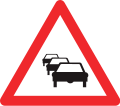 |
 |
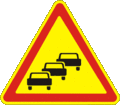 |
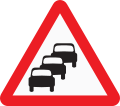 | |
| Level crossing without barriers ahead | 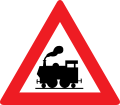 |
 |
 |
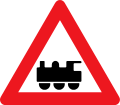 |
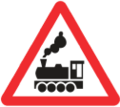 |
 |
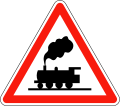 |
 |
 |
 |
NOT USED |
 |
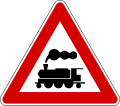 |
 |
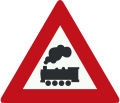 |
 |
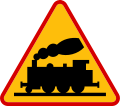 |
 |
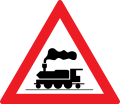 |
 |
 |
 |
 |
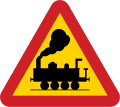 |
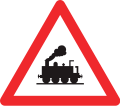 |
 |
 |
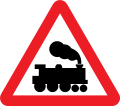 |
| Level crossing with barriers ahead | 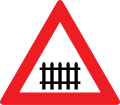 |
 |
 |
 |
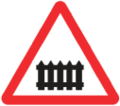 |
 |
 |
 [note 2] |
 |
 |
NOT USED |
 or 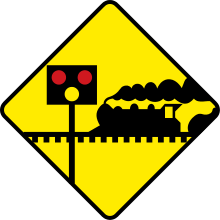 |
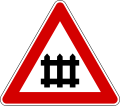 |
 |
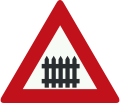 |
 |
 |
 |
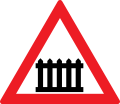 |
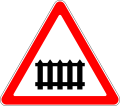 |
 |
 |
 |
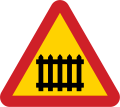 |
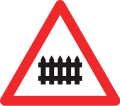 |
 |
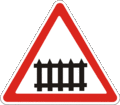 |
 |
| Level crossing |  |
NOT USED |
NOT USED |
|||||||||||||||||||||||||
| Level crossing (multiple tracks) | 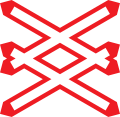 |
 |
 |
 |
NOT USED |
 |
NOT USED |
NOT USED |
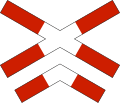 |
 |
 |
 |
 |
DEPRE- CATED |
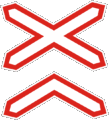 |
NOT USED | ||||||||||||
| Austria | Belgium | Czech Republic |
Denmark | Estonia | Finland | France | Germany | Greece | Hungary | Iceland | Ireland | Italy | Luxembourg | Netherlands | Norway | Poland | Portugal | Romania | Russia & Belarus |
Slovakia | Slovenia | Spain | Sweden | Switzerland & Liechtenstein |
Turkey | Ukraine | United Kingdom | |
| Tram crossing |  |
 |
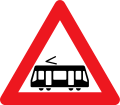 |
 |
 |
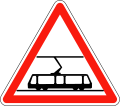 |
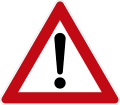 |
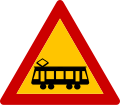 |
 |
NOT USED |
 |
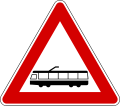 |
 |
 |
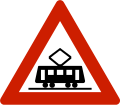 |
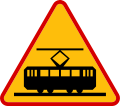 |
 |
 |
 |
 |
 |
 |
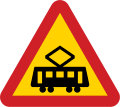 |
 |
 |
 |
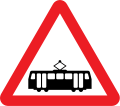 | |
| Crossroads with priority to the right | 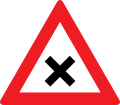 |
 |
 |
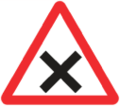 |
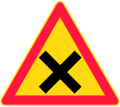 |
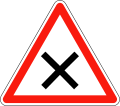 |
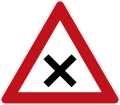 |
 |
 |
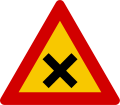 |
NOT USED |
 |
 |
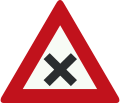 |
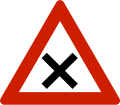 |
 |
 |
 |
 |
 |
 |
 |
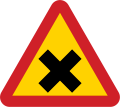 |
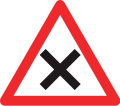 |
 |
 |
NOT USED [note 4] | |
| Crossroads with a minor road | 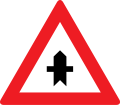 |
 |
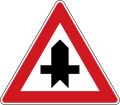 |
 |
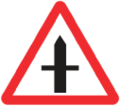 |
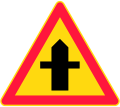 |
 |
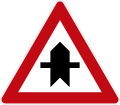 |
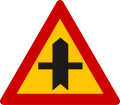 |
 |
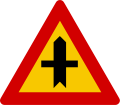 |
 |
 |
 |
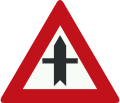 |
 |
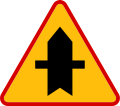 |
 |
 |
 |
 |
 |
 |
 |
 |
 |
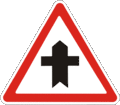 |
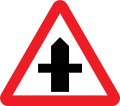 |
| Junction with a minor side road |  |
 |
 |
 |
 |
 |
NOT USED |
NOT USED |
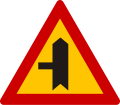 |
 |
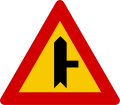 |
 |
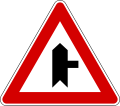 |
 |
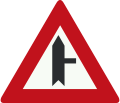 |
 |
 |
 |
 |
 |
 |
 |
 |
DISUSED |  |
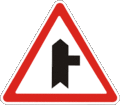 |
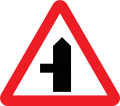 | |
| Merging traffic | NOT USED |
NOT USED |
NOT USED |
NOT USED |
NOT USED |
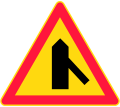 |
NOT USED |
NOT USED |
 |
 |
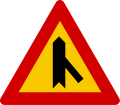 |
 |
 |
 |
NOT USED |
NOT USED |
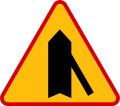 |
 |
NOT USED |
 |
NOT USED |
 |
 |
 |
DISUSED | NOT USED |
NOT USED |
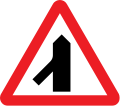 |
| Road narrows on both sides |  |
 |
 |
 |
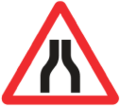 |
 |
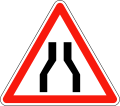 |
 |
 |
 |
 |
 |
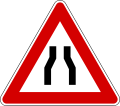 |
 |
 |
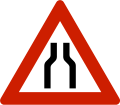 |
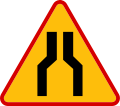 |
 |
 |
 |
 |
 |
 |
 |
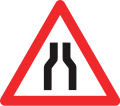 |
 |
 |
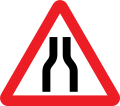 |
| Road narrows on right (left) | 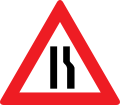 |
 |
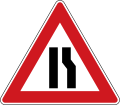 |
 |
 |
 |
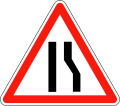 |
_verengte_Fahrbahn%2C_StVO_1992.svg.png) |
 |
 |
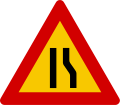 |
 |
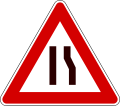 |
 |
 |
 |
 |
 |
 |
 |
 |
 |
 |
 |
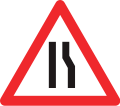 |
 |
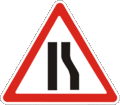 |
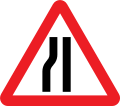 |
| Dangerous crosswinds |  |
 |
 |
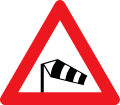 |
 |
 |
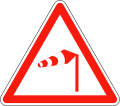 |
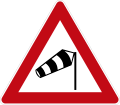 |
 |
 |
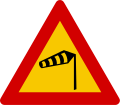 |
 |
 |
 |
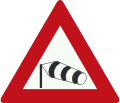 |
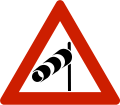 |
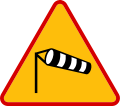 |
 |
 |
 |
 |
 or  |
 |
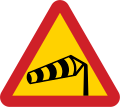 |
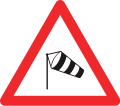 DEPRE- CATED |
 |
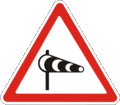 |
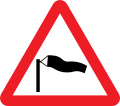 |
| Low-flying aircraft | 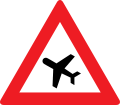 |
 |
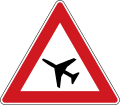 |
 or 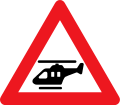 |
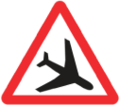 |
 |
 |
 |
 |
 |
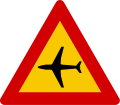 |
 |
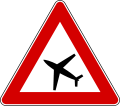 |
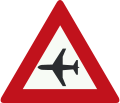 |
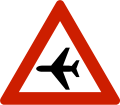 |
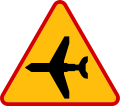 |
 |
 |
 |
 |
 |
 |
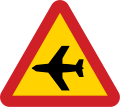 or  |
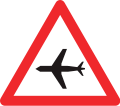 DEPRE- CATED |
 |
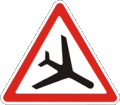 |
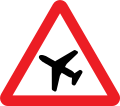 or 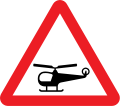 | |
| Steep descent | 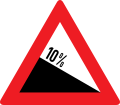 |
 |
 |
 |
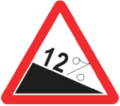 |
 |
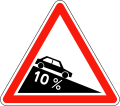 |
 |
 |
 |
 |
 |
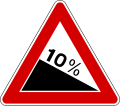 |
 |
 |
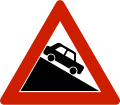 |
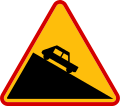 |
 |
 |
 |
 |
 |
 |
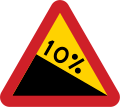 |
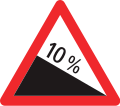 |
 |
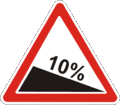 |
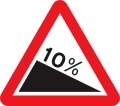 |
| Steep ascent | 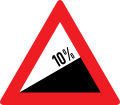 |
 |
 |
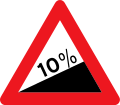 |
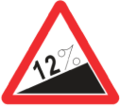 |
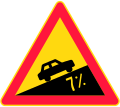 |
NOT USED |
 |
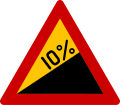 |
 |
 |
 |
 |
 |
 |
 |
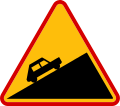 |
 |
 |
 |
 |
 |
 |
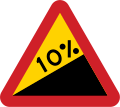 |
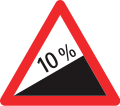 |
 |
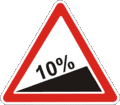 |
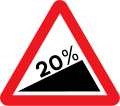 |
| Austria | Belgium | Czech Republic |
Denmark | Estonia | Finland | France | Germany | Greece | Hungary | Iceland | Ireland | Italy | Luxembourg | Netherlands | Norway | Poland | Portugal | Romania | Russia & Belarus |
Slovakia | Slovenia | Spain | Sweden | Switzerland & Liechtenstein |
Turkey | Ukraine | United Kingdom | |
| Road bump ahead |  |
 |
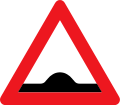 |
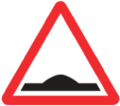 |
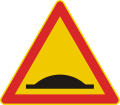 |
 |
NOT USED |
 |
 |
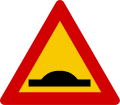 |
 |
 |
 |
 |
 |
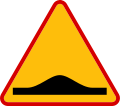 |
 |
 |
 |
 |
 |
 |
 |
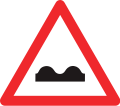 |
 |
 |
 | |
| Uneven road ahead | 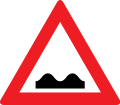 |
 |
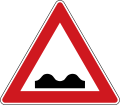 |
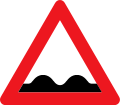 |
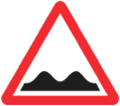 |
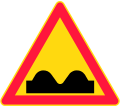 |
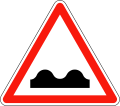 |
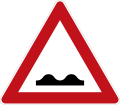 |
 |
 |
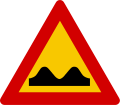 |
 |
 |
 |
 |
 |
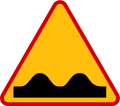 |
 |
 |
 |
 |
 |
 |
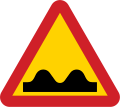 |
 |
 |
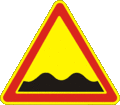 |
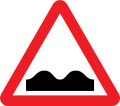 |
| Curve | 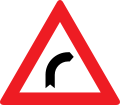 |
 |
 |
 |
 |
 |
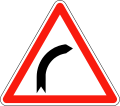 |
%2C_StVO_1992.svg.png) |
 |
 |
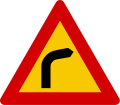 |
 |
 |
 |
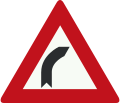 |
 |
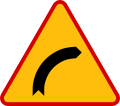 |
 |
 |
 |
 |
 |
 |
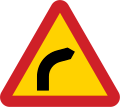 |
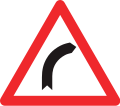 |
 |
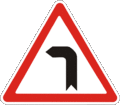 |
 |
| Double curve |  |
 |
 |
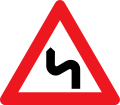 |
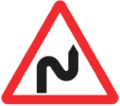 |
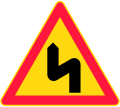 |
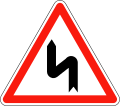 |
%2C_StVO_1992.svg.png) |
 |
 |
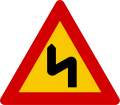 |
 |
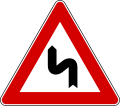 |
 |
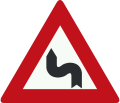 |
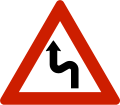 |
 |
 |
 |
 |
 |
 |
 |
 |
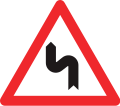 |
 |
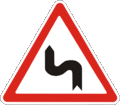 |
 |
| Slippery road surface | 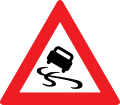 |
 |
 |
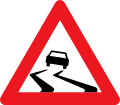 |
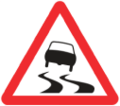 |
 |
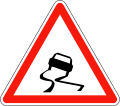 |
 |
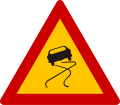 |
 |
 |
 |
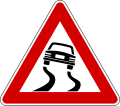 |
 |
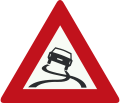 |
 |
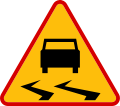 |
 |
 |
 |
 |
 |
 |
 |
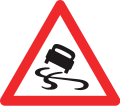 |
 |
 |
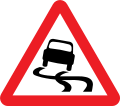 |
| Loose road surface |  |
 |
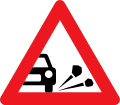 |
 |
 |
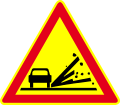 |
 |
 |
 |
 |
 |
 |
 |
 |
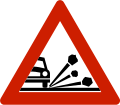 |
 |
 |
 |
 |
 |
 |
 |
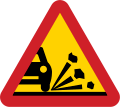 |
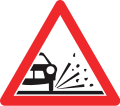 |
 |
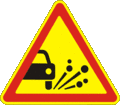 |
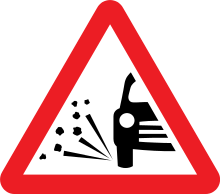 | |
| Soft verges or dangerous shoulder | NOT USED |
 |
 |
 |
 |
NOT USED |
 |
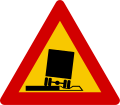 |
 |
 |
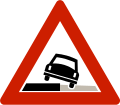 |
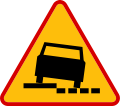 |
 |
 |
 |
 |
 |
 |
 |
NOT USED |
 |
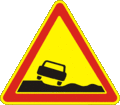 |
 | |||||
| Children | 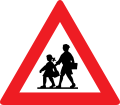 |
 |
 |
 |
 |
 |
 |
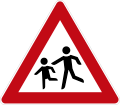 |
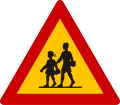 |
 |
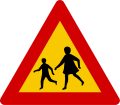 |
 |
 |
 |
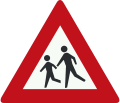 |
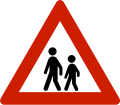 |
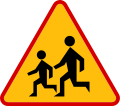 |
 |
 |
 |
 |
 |
 |
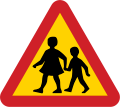 |
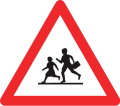 |
 |
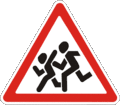 |
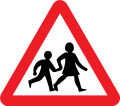 |
| Pedestrian crossing ahead | 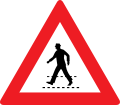 |
 |
 |
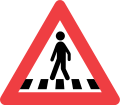 |
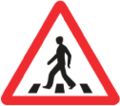 |
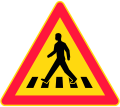 |
 |
 |
 |
 |
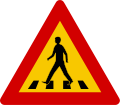 |
 |
 |
 |
 |
 |
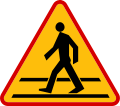 |
 |
 |
 |
 |
 |
 |
 |
 |
 |
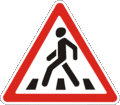 |
 |
| Cyclists | 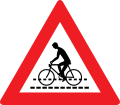 |
 |
 |
 |
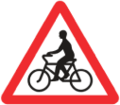 |
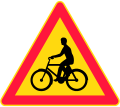 |
 |
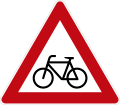 |
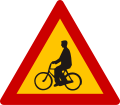 |
 |
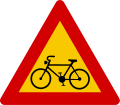 |
 |
 |
 |
 |
 |
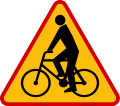 |
 |
 |
 |
 |
 |
 |
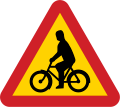 |
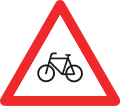 |
 |
 |
 |
| Falling rocks or debris | 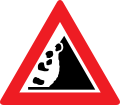 |
 |
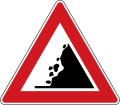 |
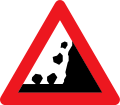 |
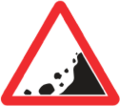 |
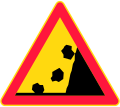 |
 |
 |
 |
 |
 |
 |
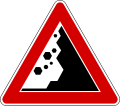 |
 |
NOT USED |
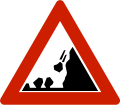 |
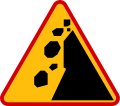 |
 |
 |
 |
 |
 |
 |
 |
.svg.png) |
 |
 |
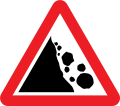 |
| Austria | Belgium | Czech Republic |
Denmark | Estonia | Finland | France | Germany | Greece | Hungary | Iceland | Ireland | Italy | Luxembourg | Netherlands | Norway | Poland | Portugal | Romania | Russia & Belarus |
Slovakia | Slovenia | Spain | Sweden | Switzerland & Liechtenstein |
Turkey | Ukraine | United Kingdom | |
| Caution, snow or ice |  |
 |
 |
NOT USED |
NOT USED |
  |
 |
 |
 |
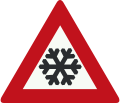 |
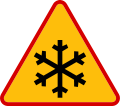 |
 |
 |
.svg.png) |
 |
 |
 |
 [note 5] |
 |
 |
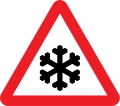 | |||||||
| Caution, fog likely | 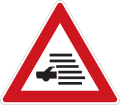 |
NOT USED |
NOT USED |
 |
 |
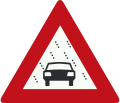 |
NOT USED |
 |
NOT USED |
 |
 |
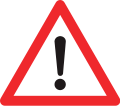 [note 6] |
NOT USED | |||||||||||||||
| Opening or swing bridge |  |
.svg.png) |
 |
NOT USED |
 |
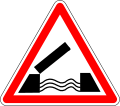 |
 |
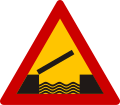 |
 |
NOT USED |
 |
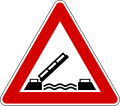 |
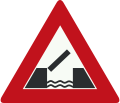 |
 |
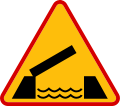 |
 |
 |
 |
 |
 |
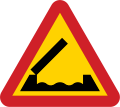 |
NOT USED |
 |
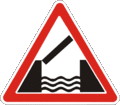 |
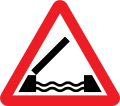 | |||
| Unprotected quayside or riverbank |  |
NOT USED |
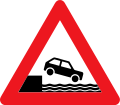 |
 |
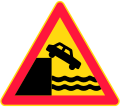 |
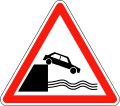 |
 |
 |
 or  |
 |
 |
 |
 |
 |
 |
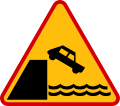 |
 |
 |
 |
 |
 |
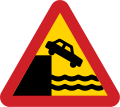 |
NOT USED |
 |
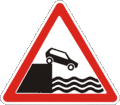 |
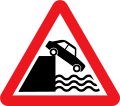 or  | ||
| Domestic animals | 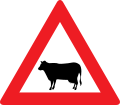 |
 |
 |
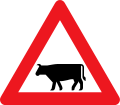 |
 |
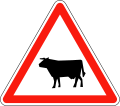 |
 |
 |
 |
 |
 |
 |
 |
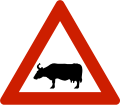 |
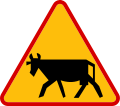 |
 |
 |
 |
 |
 |
 |
 |
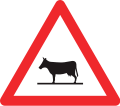 |
 |
 |
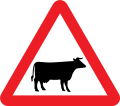 | ||
| Wild animals | 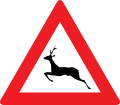 |
 |
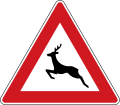 |
 |
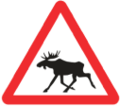 |
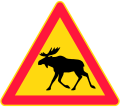 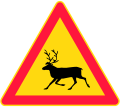 |
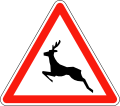 |
 |
 |
 |
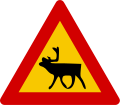 |
 |
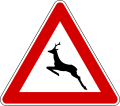 |
 |
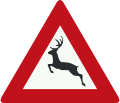 |
 |
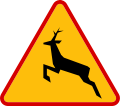 |
 |
 |
 |
 |
 |
 |
 |
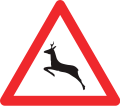 |
 |
 |
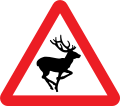 |
| Tunnel ahead | NOT USED |
NOT USED |
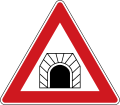 |
 |
NOT USED |
NOT USED |
NOT USED |
NOT USED |
 |
 |
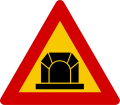 |
 |
NOT USED |
NOT USED |
NOT USED |
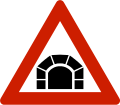 |
NOT USED |
 |
 |
 |
 |
 |
NOT USED |
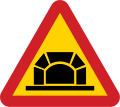 |
REPLACED by sign no. 4.07a [note 7][6] |
 |
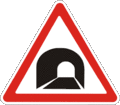 |
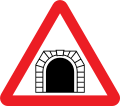 |
| Accident area / accident ahead | NOT USED |
NOT USED |
 |
NOT USED |
 |
NOT USED |
 |
 |
NOT USED |
  |
NOT USED |
 |
  |
 |
 |
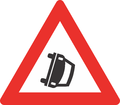 |
 |
 |
 |
.svg.png) |
 |
 |
 |
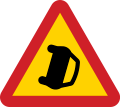 |
 [note 8] |
NOT USED |
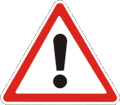 |
 |
| Roadworks ahead | 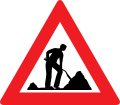 |
 |
 |
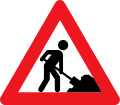 |
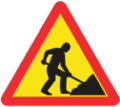 |
 |
 |
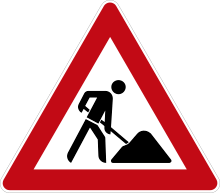 |
 |
 |
 |
 |
 |
 |
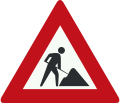 |
.svg.png) |
 |
 |
 |
 |
 |
 |
 |
 |
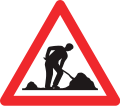 |
 |
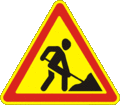 |
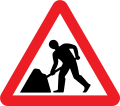 |
| Other danger |  |
 |
 |
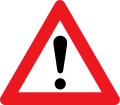 |
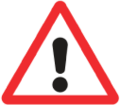 |
 or .svg.png) |
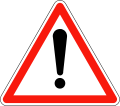 |
 |
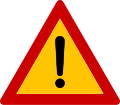 |
 |
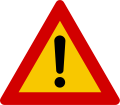 |
 |
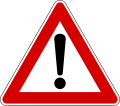 |
 |
 |
 |
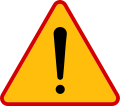 |
 |
 |
 |
 |
 |
 |
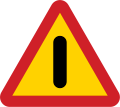 |
 |
 |
 |
 |
| Other danger (temporary) | NOT USED |
NOT USED |
NOT USED |
NOT USED |
 |
NOT USED |
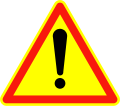 |
NOT USED |
 |
NOT USED |
NOT USED |
NOT USED |
 |
NOT USED |
NOT USED |
.svg.png) |
NOT USED |
NOT USED |
NOT USED |
NOT USED |
 |
NOT USED |
 |
NOT USED |
NOT USED |
 |
NOT USED |
NOT USED |
| Austria | Belgium | Czech Republic |
Denmark | Estonia | Finland | France | Germany | Greece | Hungary | Iceland | Ireland | Italy | Luxembourg | Netherlands | Norway | Poland | Portugal | Romania | Russia & Belarus |
Slovakia | Slovenia | Spain | Sweden | Switzerland & Liechtenstein |
Turkey | Ukraine | United Kingdom |
Prohibitory
| Austria | Belgium | Czech Republic |
Denmark | Estonia | Finland | France | Germany | Greece | Hungary | Iceland | Ireland | Italy | Luxembourg | Netherlands | Norway | Poland | Portugal | Romania | Russia & Belarus |
Slovakia | Slovenia | Spain | Sweden | Switzerland & Liechtenstein |
Turkey | Ukraine | United Kingdom | |
|---|---|---|---|---|---|---|---|---|---|---|---|---|---|---|---|---|---|---|---|---|---|---|---|---|---|---|---|---|
| Road closed to all vehicles in both directions |  |
 |
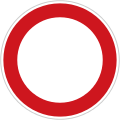 |
 |
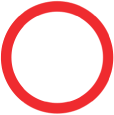 |
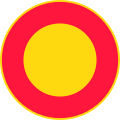 |
 |
 |
 |
 |
 |
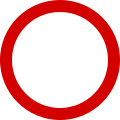 |
 |
 |
 |
 |
 |
 |
 |
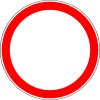 |
 |
 |
 |
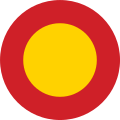 |
 |
 |
 |
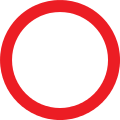 |
| No entry for vehicular traffic |  |
 |
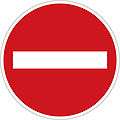 |
 |
 |
 |
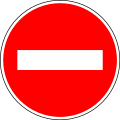 |
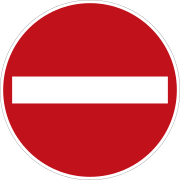 |
 |
 |
 |
(no exceptions:) (exceptions apply:) 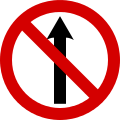 |
 |
 |
 |
 |
 |
 |
 |
 |
 |
 |
 |
 |
 |
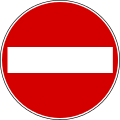 |
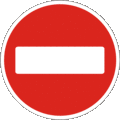 |
 |
| No motor vehicles | 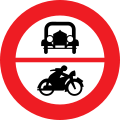 |
NOT USED |
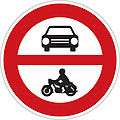 |
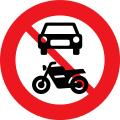 |
 |
 |
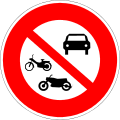 |
 |
 |
 |
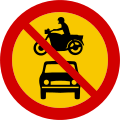 |
NOT USED |
 |
 |
 |
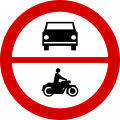 |
 |
 |
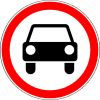 |
 |
 |
 |
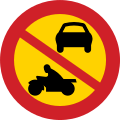 |
 |
 |
 |
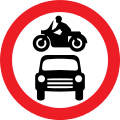 | |
| No motor vehicles except motorcycles | 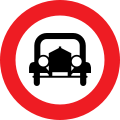 |
 |
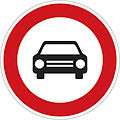 |
NOT USED |
 |
NOT USED |
NOT USED |
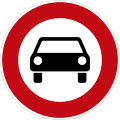 |
 |
 |
 |
NOT USED |
 |
 |
 |
NOT USED |
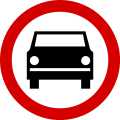 |
 |
 |
NOT USED |
 |
 |
 |
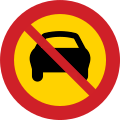 |
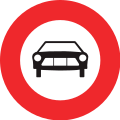 |
 |
NOT USED |
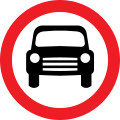 |
| No motorcycles |  |
 |
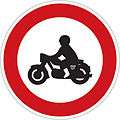 |
 |
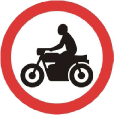 |
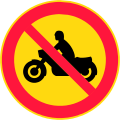 |
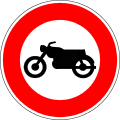 |
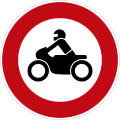 |
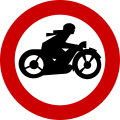 |
 |
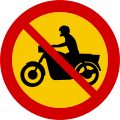 |
NOT USED |
 |
 |
 |
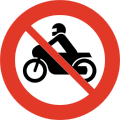 |
 |
 |
 |
 |
 |
 |
 |
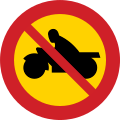 |
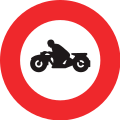 |
 |
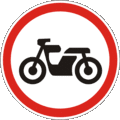 |
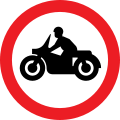 |
| No bicycles | 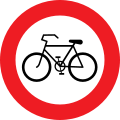 |
 |
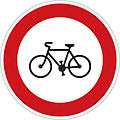 |
 |
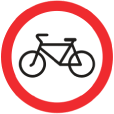 |
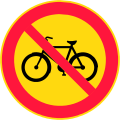 |
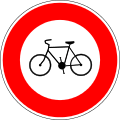 |
 |
 |
 |
 |
 |
 |
 |
 |
 |
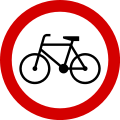 |
 |
 |
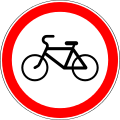 |
 |
 |
 |
 |
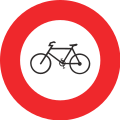 [note 11] |
 |
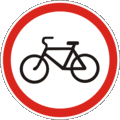 |
 |
| No pedestrians |  |
 |
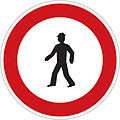 |
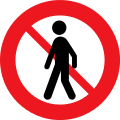 |
 |
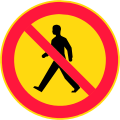 |
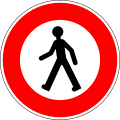 |
 |
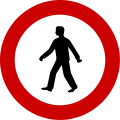 |
 |
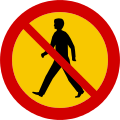 |
 |
 |
 |
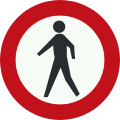 |
 |
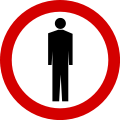 |
 |
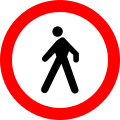 |
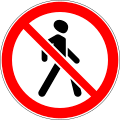 |
 |
 |
 |
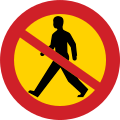 |
 |
 |
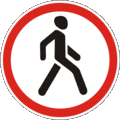 |
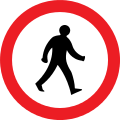 |
| No buses | 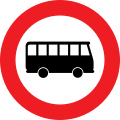 |
 |
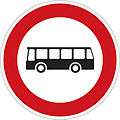 |
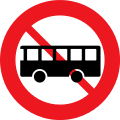 |
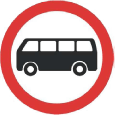 |
 |
 |
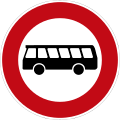 |
 |
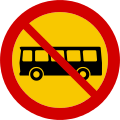 |
 |
 |
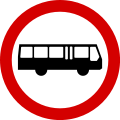 |
 |
 |
NOT USED |
 |
 |
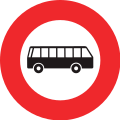 |
 |
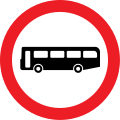 | |||||||
| No heavy goods vehicles |  |
 |
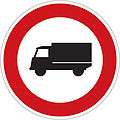 |
 |
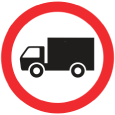 |
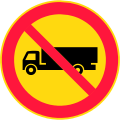 |
 |
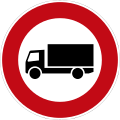 |
 |
 |
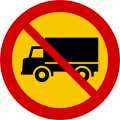 |
 |
 |
 |
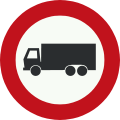 |
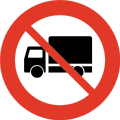 |
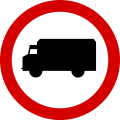 |
  |
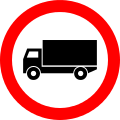 |
 |
 |
 |
 |
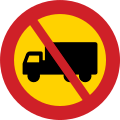 |
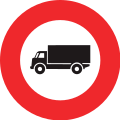 [note 13] |
 |
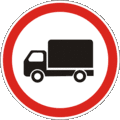 |
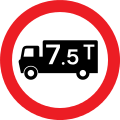 |
| No tractors | NOT USED |
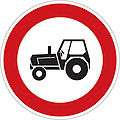 |
 |
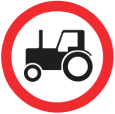 |
 |
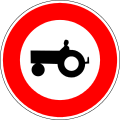 |
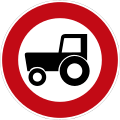 |
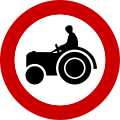 |
 |
 |
NOT USED |
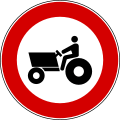 |
 |
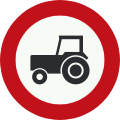 |
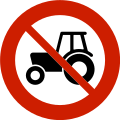 |
 |
 |
 |
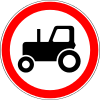 |
 |
 |
 |
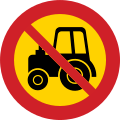 |
DISUSED |  |
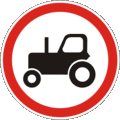 |
NOT USED | |
| No trailers | 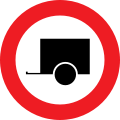 |
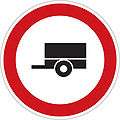 |
 |
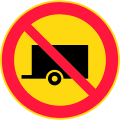 |
 |
 or  |
 |
 |
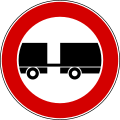 |
 |
 |
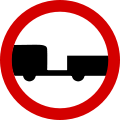 |
 or  |
 |
 |
 |
 or  or  |
 |
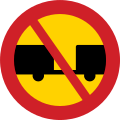 |
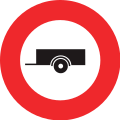 |
 |
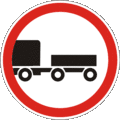 |
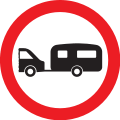 | |||||
| No horns or excessive motor noise |  |
NOT USED |
 |
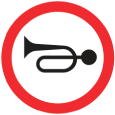 |
NOT USED |
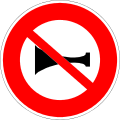 |
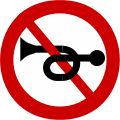 |
NOT USED |
NOT USED |
NOT USED |
 |
 |
NOT USED |
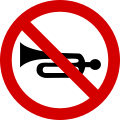 |
 |
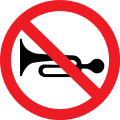 |
 |
 |
 |
 |
NOT USED |
REPLACED by sign no. 4.14 [note 15] |
 |
 |
NOT USED | |||
| Austria | Belgium | Czech Republic |
Denmark | Estonia | Finland | France | Germany | Greece | Hungary | Iceland | Ireland | Italy | Luxembourg | Netherlands | Norway | Poland | Portugal | Romania | Russia & Belarus |
Slovakia | Slovenia | Spain | Sweden | Switzerland & Liechtenstein |
Turkey | Ukraine | United Kingdom | |
| No overtaking | 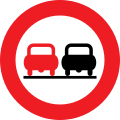 |
 |
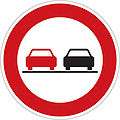 |
 |
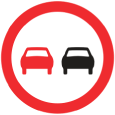 |
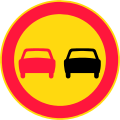 |
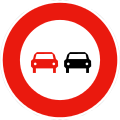 |
 |
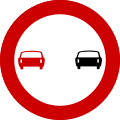 |
 |
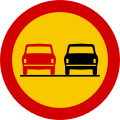 |
 |
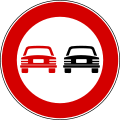 |
 |
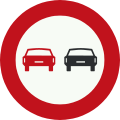 |
 |
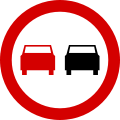 |
 or  |
 |
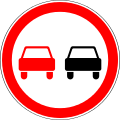 |
 |
 |
 |
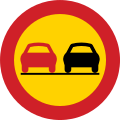 |
 |
 |
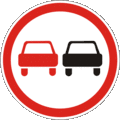 |
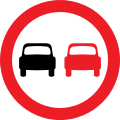 |
| No overtaking by heavy goods vehicles | 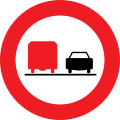 |
 |
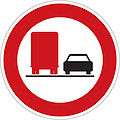 |
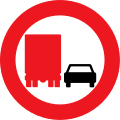 |
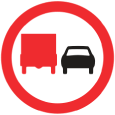 |
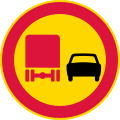 |
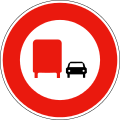 |
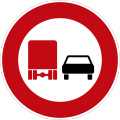 |
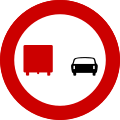 |
 |
 |
.svg.png) |
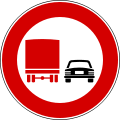 |
 |
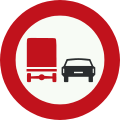 |
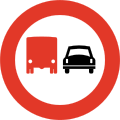 |
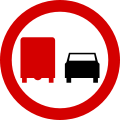 |
 |
 |
 |
 |
 |
 |
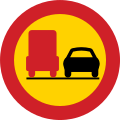 |
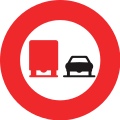 |
 |
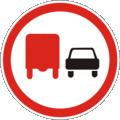 |
NOT USED |
| Maximum speed limit | .svg.png) |
 |
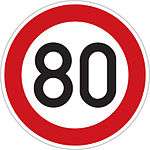 |
 |
 |
.svg.png) |
 |
 |
 |
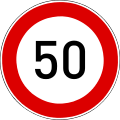 |
 |
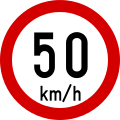 |
 |
 |
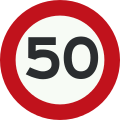 |
 |
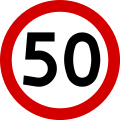 |
 |
 |
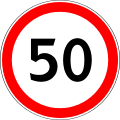 |
 |
.svg.png) |
 |
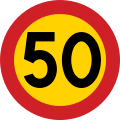 |
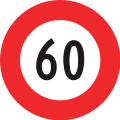 |
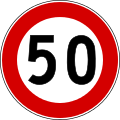 |
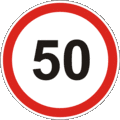 |
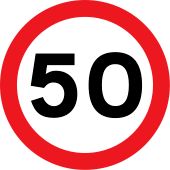 |
| Speed limit zone | 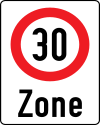 |
 |
_(2016).jpg) |
 |
 |
.svg.png) |
.svg.png) |
 |
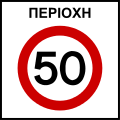 |
 |
 |
 |
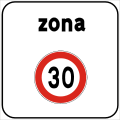 |
.gif) |
 |
 |
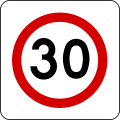 |
 |
 |
 |
.svg.png) |
 |
NOT USED |
 or  |
 |
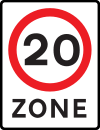 | ||
| Maximum height | 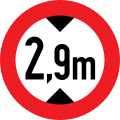 |
 |
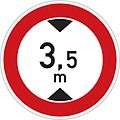 |
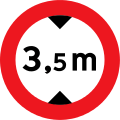 |
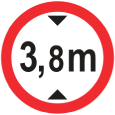 |
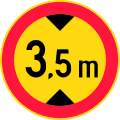 |
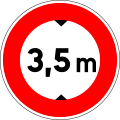 |
%3B_StVO_1992.svg.png) |
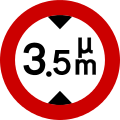 |
 |
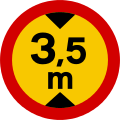 |
 |
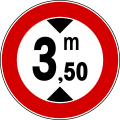 |
 |
 |
 |
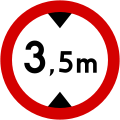 |
 |
 |
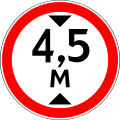 |
 |
 |
 |
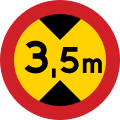 |
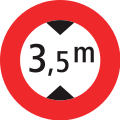 |
 |
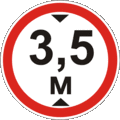 |
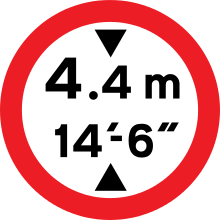 |
| Maximum width | 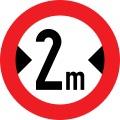 |
 |
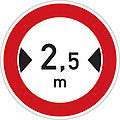 |
 |
 |
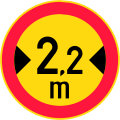 |
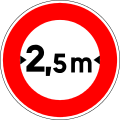 |
 |
 |
 |
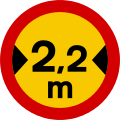 |
 |
 |
 |
 |
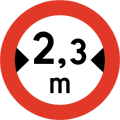 |
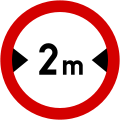 |
 |
 |
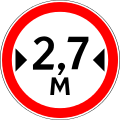 |
 |
 |
 |
 |
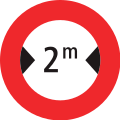 |
 |
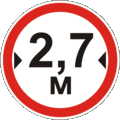 |
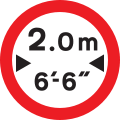 |
| Maximum vehicle length |  or  |
 |
 |
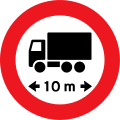 |
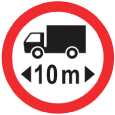 |
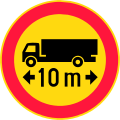 |
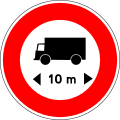 |
 |
 |
 |
 |
 |
 |
 |
 |
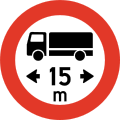 |
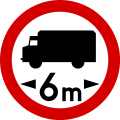 |
 |
 |
 |
 |
 |
 |
 |
 |
 |
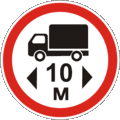 |
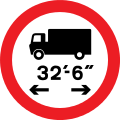 and/or  |
| Maximum weight | 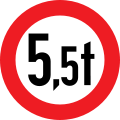 |
 |
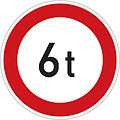 |
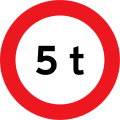 |
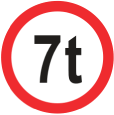 |
 |
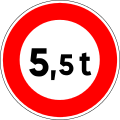 |
%3B_StVO_1992.svg.png) |
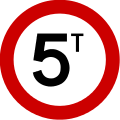 |
 |
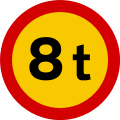 |
 |
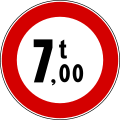 |
 |
 |
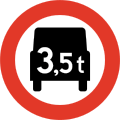 or  |
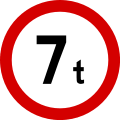 |
 |
 |
 |
 |
 |
 |
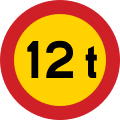 |
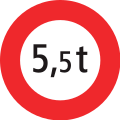 |
 |
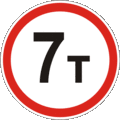 |
 |
| Maximum weight per axle | 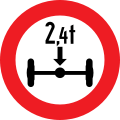 |
NOT USED |
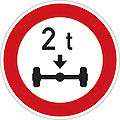 |
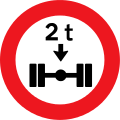 |
 |
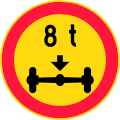 |
 |
 |
 |
 |
 |
 |
 |
 |
 |
 |
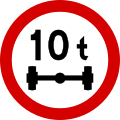 |
 |
 |
 |
 |
 |
 |
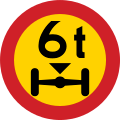 |
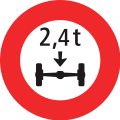 |
 |
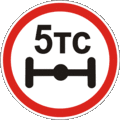 |
NOT USED |
| Maximum weight per tandem axle | NOT USED |
NOT USED |
NOT USED |
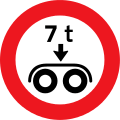 |
 |
 |
NOT USED |
NOT USED |
NOT USED |
NOT USED |
NOT USED |
NOT USED |
NOT USED |
NOT USED |
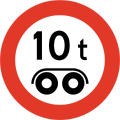 |
NOT USED |
NOT USED |
 or  |
NOT USED |
NOT USED |
NOT USED |
NOT USED |
 |
 [note 17] |
NOT USED |
NOT USED |
NOT USED | |
| Austria | Belgium | Czech Republic |
Denmark | Estonia | Finland | France | Germany | Greece | Hungary | Iceland | Ireland | Italy | Luxembourg | Netherlands | Norway | Poland | Portugal | Romania | Russia & Belarus |
Slovakia | Slovenia | Spain | Sweden | Switzerland & Liechtenstein |
Turkey | Ukraine | United Kingdom | |
| No vehicles carrying dangerous goods | 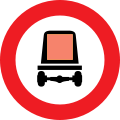 |
 or  |
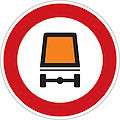 |
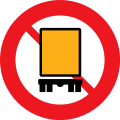 |
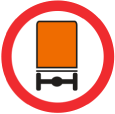 |
 |
 |
 |
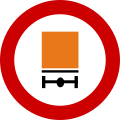 |
 |
 |
NOT USED |
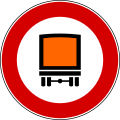 |
 |
 |
 |
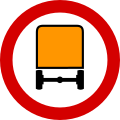 |
 |
 |
 |
 |
 |
 |
 |
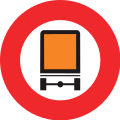 |
 |
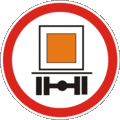 |
 |
| No vehicles carrying dangerous water pollutants |  |
 |
 |
NOT USED |
NOT USED |
NOT USED |
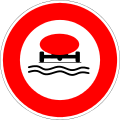 |
 |
 |
 |
 |
NOT USED |
 |
 |
NOT USED |
NOT USED |
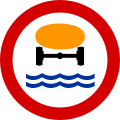 |
 |
 |
NOT USED |
 |
 |
 |
NOT USED |
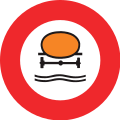 |
 |
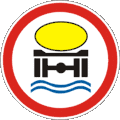 |
NOT USED |
| No vehicles carrying explosives | NOT USED |
 |
NOT USED |
NOT USED |
NOT USED |
NOT USED |
 |
 |
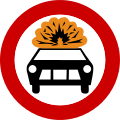 |
 |
NOT USED |
 |
 |
 |
NOT USED |
NOT USED |
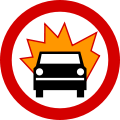 |
 |
 |
 |
NOT USED |
 |
 |
 |
 |
 |
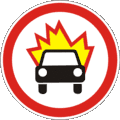 |
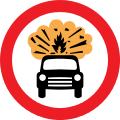 |
| Minimum safe following distance between vehicles | NOT USED |
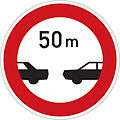 |
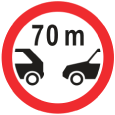 |
 |
 |
 |
 |
 or  |
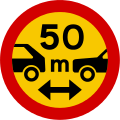 |
NOT USED |
 |
 |
NOT USED |
NOT USED |
 |
 |
 |
 |
 |
 |
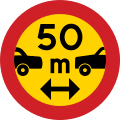 |
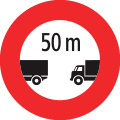 |
 |
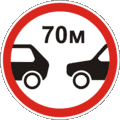 |
 | |||
| No right turn | 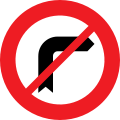 |
 |
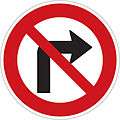 |
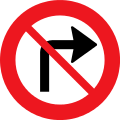 |
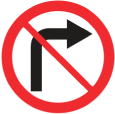 |
 |
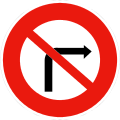 |
NOT USED |
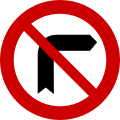 |
 |
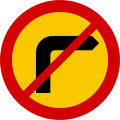 |
 |
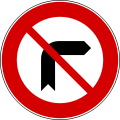 |
 |
NOT USED |
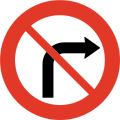 |
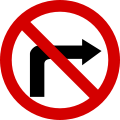 |
 |
 |
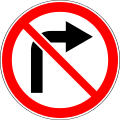 |
 |
 |
 |
 |
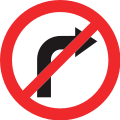 |
 |
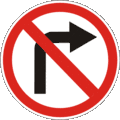 |
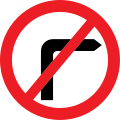 |
| No left turn |  |
 |
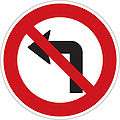 |
 |
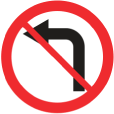 |
 |
 |
NOT USED |
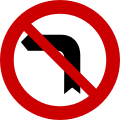 |
 |
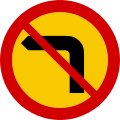 |
 |
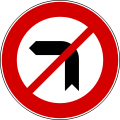 |
 |
NOT USED |
 |
 |
 |
 |
 |
 |
 |
 |
 |
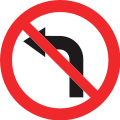 |
 |
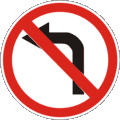 |
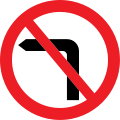 |
| No U-turns | 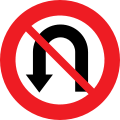 |
 |
 |
 |
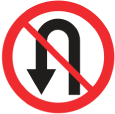 |
 |
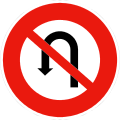 |
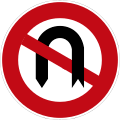 |
 |
 |
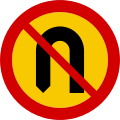 |
 |
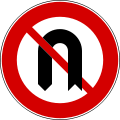 |
 |
 |
 |
 |
 |
 |
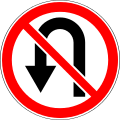 |
 |
 |
 |
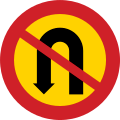 |
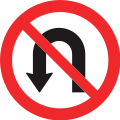 |
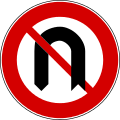 |
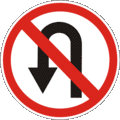 |
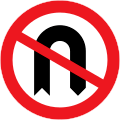 |
| No parking or waiting |  |
 |
 |
 |
 |
 |
 |
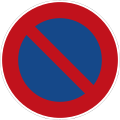 |
 |
 |
 |
 |
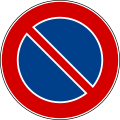 |
 |
 |
 |
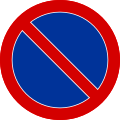 |
 |
 |
 |
 |
 |
 |
 |
 |
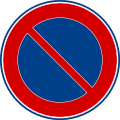 |
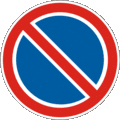 |
 |
| No stopping |  |
 |
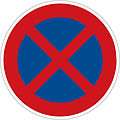 |
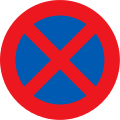 |
 |
 |
 |
 |
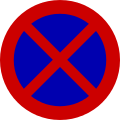 |
 |
 |
 |
 |
 |
 |
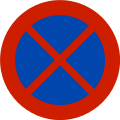 |
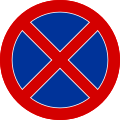 |
 |
 |
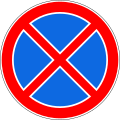 |
 |
 |
 |
 |
 |
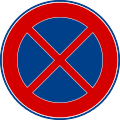 |
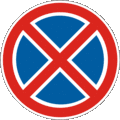 |
 |
| No parking zone |  |
 |
 |
 |
 |
 |
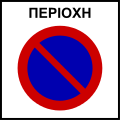 |
 |
 |
 |
NOT USED |
.gif) |
 |
 |
 |
 |
 |
 |
 |
 |
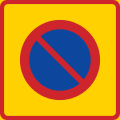 |
 or  |
 |
 | ||||
| Austria | Belgium | Czech Republic |
Denmark | Estonia | Finland | France | Germany | Greece | Hungary | Iceland | Ireland | Italy | Luxembourg | Netherlands | Norway | Poland | Portugal | Romania | Russia & Belarus |
Slovakia | Slovenia | Spain | Sweden | Switzerland & Liechtenstein |
Turkey | Ukraine | United Kingdom |
End of prohibition
| Austria | Belgium | Czech Republic |
Denmark | Estonia | Finland | France | Germany | Greece | Hungary | Iceland | Ireland | Italy | Luxembourg | Netherlands | Norway | Poland | Portugal | Romania | Russia & Belarus |
Slovakia | Slovenia | Spain | Sweden | Switzerland & Liechtenstein |
Turkey | Ukraine | United Kingdom | |
|---|---|---|---|---|---|---|---|---|---|---|---|---|---|---|---|---|---|---|---|---|---|---|---|---|---|---|---|---|
| End of overtaking prohibition | 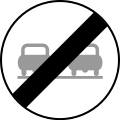 |
 |
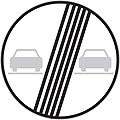 |
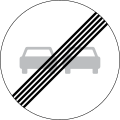 |
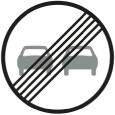 |
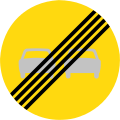 |
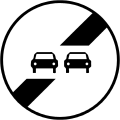 |
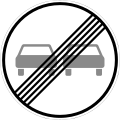 |
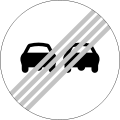 |
 |
 |
 |
 |
 |
 |
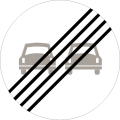 |
 |
 |
 |
 |
 |
 |
 |
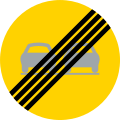 |
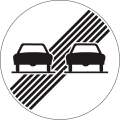 |
 |
 |
 |
| End of no honking | NOT USED |
NOT USED |
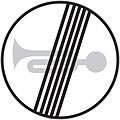 |
NOT USED |
NOT USED |
NOT USED |
 |
NOT USED |
NOT USED |
NOT USED |
NOT USED |
NOT USED |
NOT USED |
NOT USED |
NOT USED |
NOT USED |
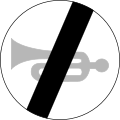 |
 |
NOT USED |
NOT USED |
 |
 |
 |
NOT USED |
DISUSED | NOT USED |
NOT USED |
NOT USED |
| End of maximum speed limit | .svg.png) |
 |
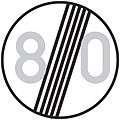 |
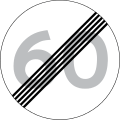 |
 |
.svg.png) |
.svg.png) |
 |
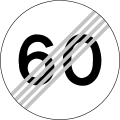 |
 |
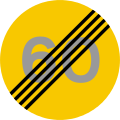 |
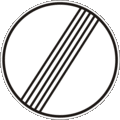 |
 |
 |
 |
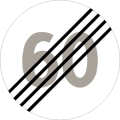 |
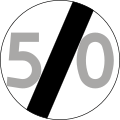 |
 |
 |
 |
 |
.svg.png) |
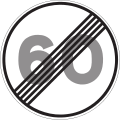 |
NOT USED |
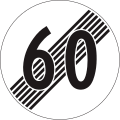 |
 |
 |
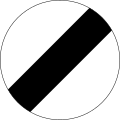 |
| End of all restrictions |  |
 |
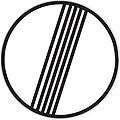 |
 |
 |
NOT USED |
 |
 |
 |
 |
 |
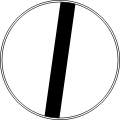 |
 |
 |
 |
 |
 |
 |
 |
 |
 |
NOT USED |
 |
 |
 |
NOT USED | ||
| End of speed limit zone |  |
 |
 |
 |
.svg.png) |
.svg.png) |
%2C_StVO_2013.svg.png) |
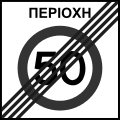 |
 |
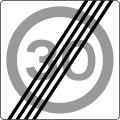 |
 |
.gif) |
 |
 |
 |
 |
 |
.svg.png) |
 |
NOT USED |
 or  |
 |
 |
Mandatory
| Austria | Belgium | Czech Republic |
Denmark | Estonia | Finland | France | Germany | Greece | Hungary | Iceland | Ireland | Italy | Luxembourg | Netherlands | Norway | Poland | Portugal | Romania | Russia & Belarus |
Slovakia | Slovenia | Spain | Sweden | Switzerland & Liechtenstein |
Turkey | Ukraine | United Kingdom | |
|---|---|---|---|---|---|---|---|---|---|---|---|---|---|---|---|---|---|---|---|---|---|---|---|---|---|---|---|---|
| Proceed straight (no turns) |
 |
 |
 |
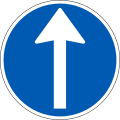 |
 |
 |
 |
 |
 |
 |
 |
 |
 |
 |
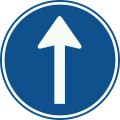 |
 |
 |
 |
 |
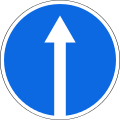 |
 |
 |
 |
 |
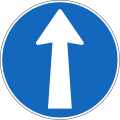 |
 |
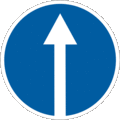 |
 |
| Turn right |  |
 |
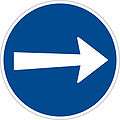 |
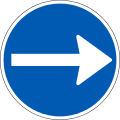 |
 |
 |
 |
%2C_StVO_1992.svg.png) |
 |
 |
 |
 |
 |
NOT USED |
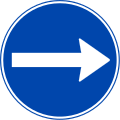 |
 |
 |
 |
NOT USED |
 |
 |
 |
 |
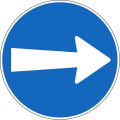 |
 |
NOT USED |
 | |
| Turn right ahead |  |
 |
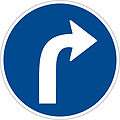 |
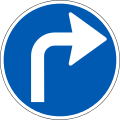 |
 |
 |
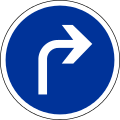 |
 |
 |
 |
 |
 |
 |
 |
 |
 |
 |
 |
 |
 |
NOT USED |
 |
 |
 |
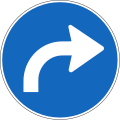 |
 |
 |
 |
| Proceed straight or turn right |  |
 |
 |
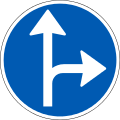 |
 |
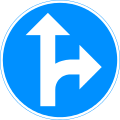 |
 |
 |
 |
 |
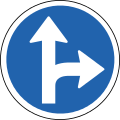 |
NOT USED |
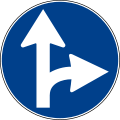 |
 |
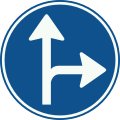 |
 |
 |
 |
 |
 |
 |
 |
 |
 |
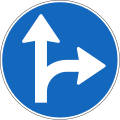 |
 |
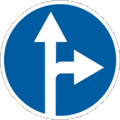 |
NOT USED |
| Pass on this side |  |
 |
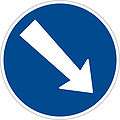 |
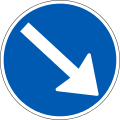 |
 |
 |
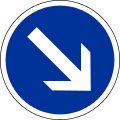 or  |
 |
 |
 or  |
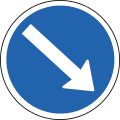 |
 |
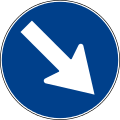 |
 |
 |
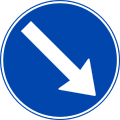 |
 |
 |
 |
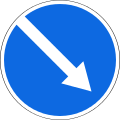 |
 |
 |
 |
 |
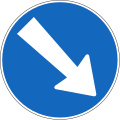 |
 |
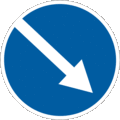 |
 |
| Pass on either side | 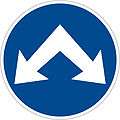 |
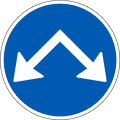 |
 |
 |
 |
 |
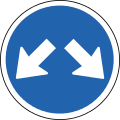 |
 |
 |
 |
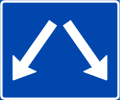 |
 |
NOT USED |
 |
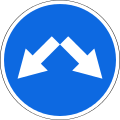 |
 |
 |
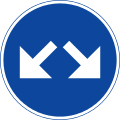 |
 |
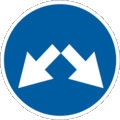 |
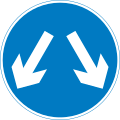 | |||||||
| Roundabout | NOT USED |
 |
 |
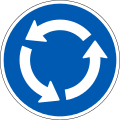 |
 |
 |
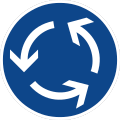 |
 |
 |
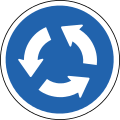 |
 |
 |
 |
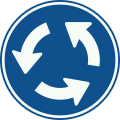 |
 |
 |
 |
 |
 |
 |
 |
 |
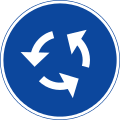 |
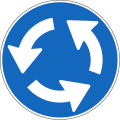 |
 |
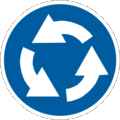 |
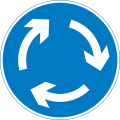 | |
| Mandatory direction for vehicles carrying dangerous goods |  |
 |
NOT USED |
NOT USED |
 |
NOT USED |
 |
NOT USED |
NOT USED |
 |
NOT USED |
NOT USED |
 |
NOT USED |
NOT USED |
 |
NOT USED |
 |
 |
 |
 |
 |
 |
 |
 |
NOT USED | ||
| Minimum speed limit |  |
NOT USED |
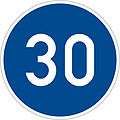 |
 |
 |
NOT USED |
.svg.png) |
 |
 |
 |
NOT USED |
NOT USED |
 |
 |
NOT USED |
 |
 |
 |
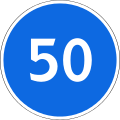 |
 |
.svg.png) |
 |
NOT USED |
 |
 |
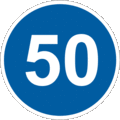 |
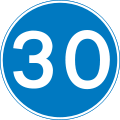 | |
| Minimum speed limit ends |  |
NOT USED |
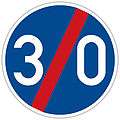 |
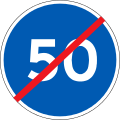 |
 |
NOT USED |
.svg.png) |
 |
 |
 |
NOT USED |
NOT USED |
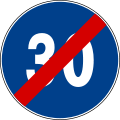 |
 |
NOT USED |
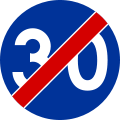 |
 |
 |
 |
 |
.svg.png) |
 |
NOT USED |
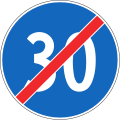 |
 |
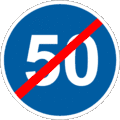 |
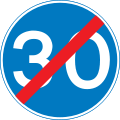 | |
| Bicycles only |  |
 |
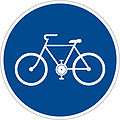 |
 |
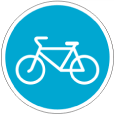 |
 |
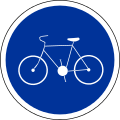 |
 |
 |
 |
 |
 |
 |
 |
 |
 |
 |
 |
 |
 |
 |
 |
 |
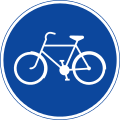 |
 [note 11] |
 |
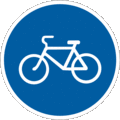 |
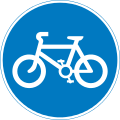 |
| Pedestrians only |  |
 |
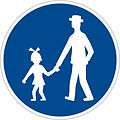 |
 |
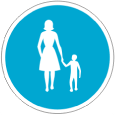 |
 |
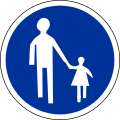 |
 |
 |
 |
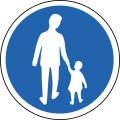 |
 |
 |
 |
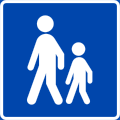 |
 |
 |
 |
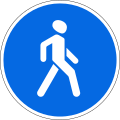 |
 |
 |
 |
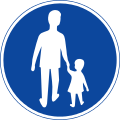 |
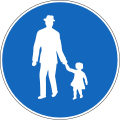 |
 |
 |
NOT USED | |
| Shared use path | 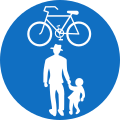 |
 |
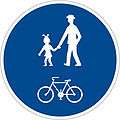 |
 |
 |
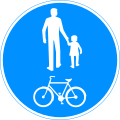 |
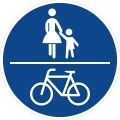 |
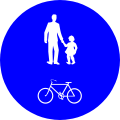 |
 |
 |
 |
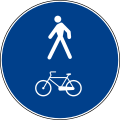 |
 |
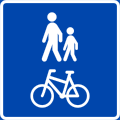 |
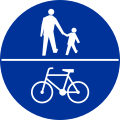 |
 |
 |
 |
 |
 |
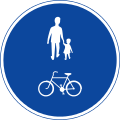 |
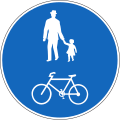 [note 11] |
 |
 | ||||
| Equestrian path |  |
 |
 |
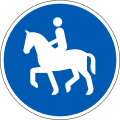 |
 |
 |
 |
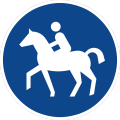 |
 |
NOT USED |
 |
NOT USED |
 |
 |
 |
NOT USED |
NOT USED |
 |
.svg.png) |
 |
 |
 |
 |
 |
 |
 |
NOT USED | |
| Austria | Belgium | Czech Republic |
Denmark | Estonia | Finland | France | Germany | Greece | Hungary | Iceland | Ireland | Italy | Luxembourg | Netherlands | Norway | Poland | Portugal | Romania | Russia & Belarus |
Slovakia | Slovenia | Spain | Sweden | Switzerland & Liechtenstein |
Turkey | Ukraine | United Kingdom |
Special regulations
| Austria | Belgium | Czech Republic |
Denmark | Estonia | Finland | France | Germany | Greece | Hungary | Iceland | Ireland | Italy | Luxembourg | Netherlands | Norway | Poland | Portugal | Romania | Russia & Belarus |
Slovakia | Slovenia | Spain | Sweden | Switzerland & Liechtenstein |
Turkey | Ukraine | United Kingdom | |
|---|---|---|---|---|---|---|---|---|---|---|---|---|---|---|---|---|---|---|---|---|---|---|---|---|---|---|---|---|
| One-way street |  |
 |
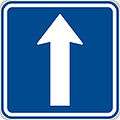 |
 |
NOT USED |
 |
NOT USED |
 |
 |
 |
 |
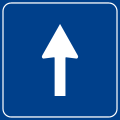 |
 |
 |
 |
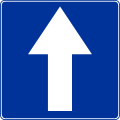 |
 |
 |
 |
 |
 |
 |
 |
 |
 |
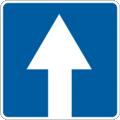 |
 | |
| NOT USED |
NOT USED |
NOT USED |
NOT USED |
NOT USED |
||||||||||||||||||||||||
| Pedestrian crossing | .svg.png) |
 |
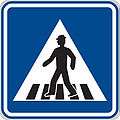 |
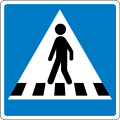 |
 |
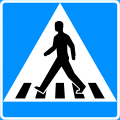 |
 |
%2C_StVO_1992.svg.png) |
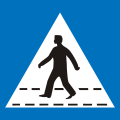 |
 |
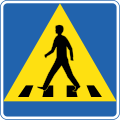 |
 |
 |
 |
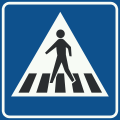 |
 |
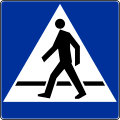 |
 |
 |
 |
 |
 |
 |
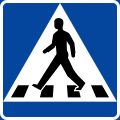 or  |
 [note 19] |
 |
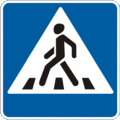 |
NOT USED |
| Advisory speed limit | NOT USED |
NOT USED |
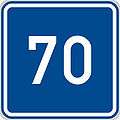 |
 |
 |
.svg.png) |
.svg.png) |
NOT USED |
 |
 |
NOT USED |
NOT USED |
 |
 |
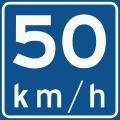 |
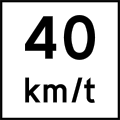 |
NOT USED |
 |
 |
 |
 |
.svg.png) |
 |
 |
NOT USED |
 |
or | |
| Lane ends |  |
 |
 |
  |
 |
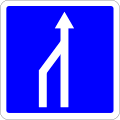 |
 |
 |
 |
 |
 |
 |
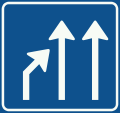 |
 |
 |
 |
 |
 |
 |
 |
 |
 |
 |
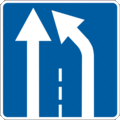 |
 | |||
| Road bump |  |
 |
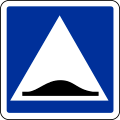 |
NOT USED |
 |
 |
NOT USED |
|||||||||||||||||||||
| Residential area/Living street |  |
 |
NOT USED |
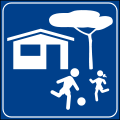 |
 |
NOT USED |
 |
 |
or |
 |
 | |||||||||||||||||
| Pedestrian zone |  |
 |
 |
 |
 |
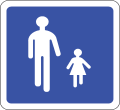 |
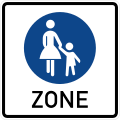 |
 |
 |
 |
 |
 |
NOT USED |
 |
 .svg.png) |
 |
 |
 |
 or  |
 |
 | |||||||
| Bus lane | 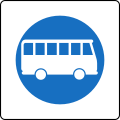 |
 |
 |
 |
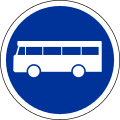 |
 |
 |
 |
 |
 |
 |
 |
 |
 |
 |
 |
 |
 |
 |
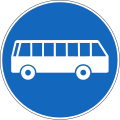 |
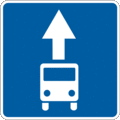 |
 | ||||||
| Limited-access road |  |
 |
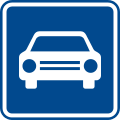 |
 |
NOT USED |
 |
 |
%3B_StVO_1992.svg.png) |
 |
 |
NOT USED |
NOT USED |
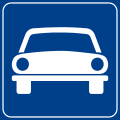 |
 |
 |
 |
 |
 |
 |
 |
 |
 |
 |
 |
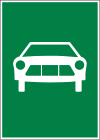 |
 |
 |
NOT USED |
| End of limited-access road |  |
 |
 |
 |
NOT USED |
 |
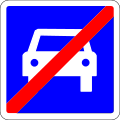 |
 |
 |
 |
NOT USED |
NOT USED |
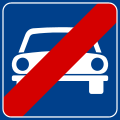 |
 |
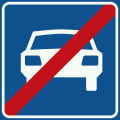 |
 |
 |
 |
 |
 |
 |
 |
 |
 |
 |
 |
 |
NOT USED |
| Motorway | 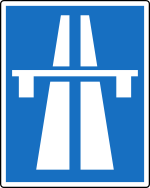 |
 |
 |
 |
 |
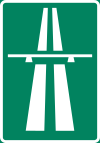 |
 |
 |
 |
 |
NOT USED |
 |
 |
 |
 |
 |
 |
 |
 |
 |
 |
 |
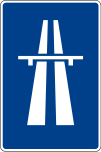 |
 |
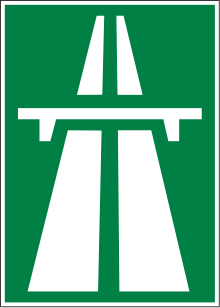 |
 |
 | |
| End of motorway |  |
 |
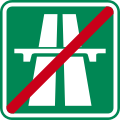 |
 |
 |
 |
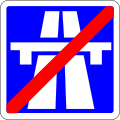 |
%2C_StVO_1992.svg.png) |
 |
 |
NOT USED |
 |
 |
 |
 |
 |
 |
 |
 |
 |
 |
 |
 |
 |
 |
 |
 |
 |
| Austria | Belgium | Czech Republic |
Denmark | Estonia | Finland | France | Germany | Greece | Hungary | Iceland | Ireland | Italy | Luxembourg | Netherlands | Norway | Poland | Portugal | Romania | Russia & Belarus |
Slovakia | Slovenia | Spain | Sweden | Switzerland & Liechtenstein |
Turkey | Ukraine | United Kingdom |
Indication
| Austria | Belgium | Czech Republic |
Denmark | Estonia | Finland | France | Germany | Greece | Hungary | Iceland | Ireland | Italy | Luxembourg | Netherlands | Norway | Poland | Portugal | Romania | Russia & Belarus |
Slovakia | Slovenia | Spain | Sweden | Switzerland & Liechtenstein |
Turkey | Ukraine | United Kingdom | |
|---|---|---|---|---|---|---|---|---|---|---|---|---|---|---|---|---|---|---|---|---|---|---|---|---|---|---|---|---|
| No through road | 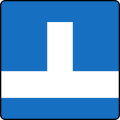 |
 |
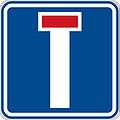 |
 |
 |
 |
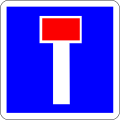 |
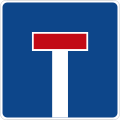 |
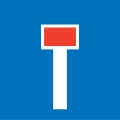 |
 |
 |
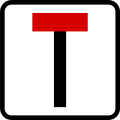 |
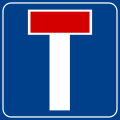 |
 |
 |
 |
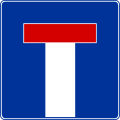 |
 |
 |
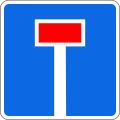 |
 |
 |
 |
 |
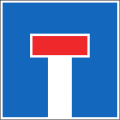 |
 |
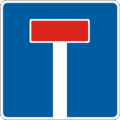 |
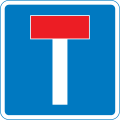 |
| Hospital | 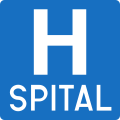 |
 |
 |
NOT USED |
 (Clinic) or |
 |
 |
 |
 |
 |
 |
 |
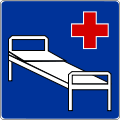 |
 |
 |
 |
 |
 |
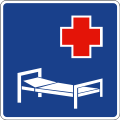 |
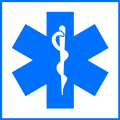 [note 21] |
 |
 |
 or  | |||||
| First aid |  |
 |
 |
 |
 |
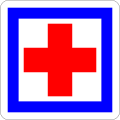 |
 |
 |
 |
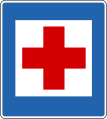 |
NOT USED |
 |
 |
 |
 |
 |
 |
 |
 |
 |
 |
 |
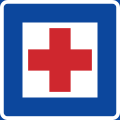 |
 |
 |
 |
NOT USED | |
| Pharmacy | 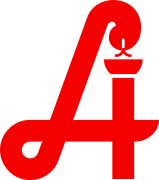 |
NOT USED |
NOT USED |
NOT USED |
 |
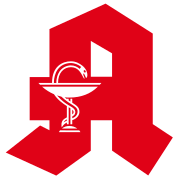 |
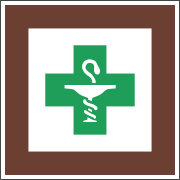 |
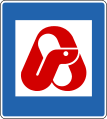 |
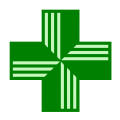 |
 |
 |
 |
 |
 |
 |
 |
 | |||||||||||
| Bus stop | NOT USED |
Front: or 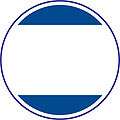 Rear:  |
 |
or |
Fare network-specific or 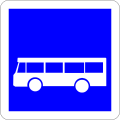 |
 |
 |
 |
 |
 |
 or  |
 |
 |
 |
 |
 |
 |
 |
Fare network-specific and: |
 |
 |
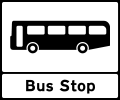 | ||||||
| Escape lane |  |
 |
NOT USED |
NOT USED |
NOT USED |
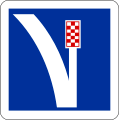 |
NOT USED |
NOT USED |
NOT USED |
 |
 |
 |
 |
 |
NOT USED |
 |
 |
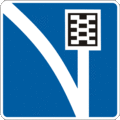 |
 | |||||||||
| Tunnel |  |
 |
 |
 |
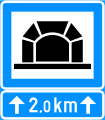 |
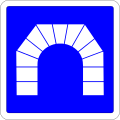 |
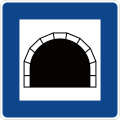 |
 |
 |
NOT USED |
NOT USED |
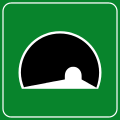 or 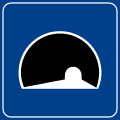 [note 25] |
 |
 |
 |
 |
 |
NOT USED |
 |
 |
 |
 [note 26][7] |
 |
NOT USED | ||||
| Parking place | .svg.png) |
 |
 |
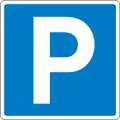 |
 |
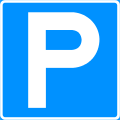 |
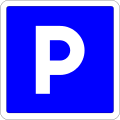 |
 |
 |
 |
 |
 |
 |
 |
 |
 |
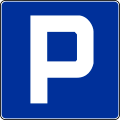 |
 |
 |
 |
 |
 |
 |
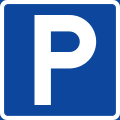 |
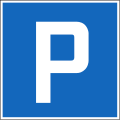 |
 |
 |
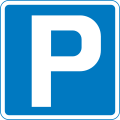 |
| Austria | Belgium | Czech Republic |
Denmark | Estonia | Finland | France | Germany | Greece | Hungary | Iceland | Ireland | Italy | Luxembourg | Netherlands | Norway | Poland | Portugal | Romania | Russia & Belarus |
Slovakia | Slovenia | Spain | Sweden | Switzerland & Liechtenstein |
Turkey | Ukraine | United Kingdom |
Border Crossings
| Austria | Belgium | Czech Republic |
Denmark | Estonia | Finland | France | Germany | Greece | Hungary | Iceland | Ireland | Italy | Luxembourg | Netherlands | Norway | Poland | Portugal | Romania | Russia & Belarus |
Slovakia | Slovenia | Spain | Sweden | Switzerland & Liechtenstein |
Turkey | Ukraine | United Kingdom | |
|---|---|---|---|---|---|---|---|---|---|---|---|---|---|---|---|---|---|---|---|---|---|---|---|---|---|---|---|---|
| Schengen Area or other national Border |  |
 or  or |
 |
 |
 |
 or  |
 |
 |
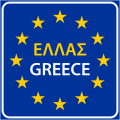 |
 |
NOT USED |
NOT USED |
 |
 |
 |
NOT USED |
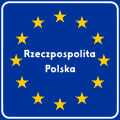 |
 |
NOT USED |
NOT USED |
 |
 |
 |
 |
NOT USED |
NOT USED | ||
| National speed limits |  |
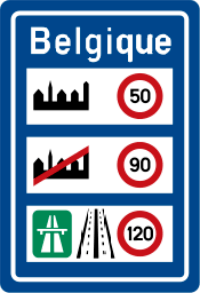 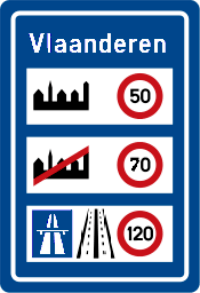 |
.jpg) |
 |
 |
 |
 |
%2C_StVO_1981.svg.png) |
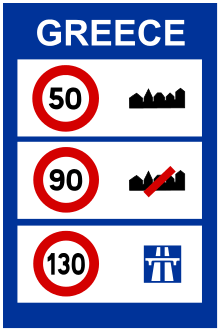 |
 |
 |
 |
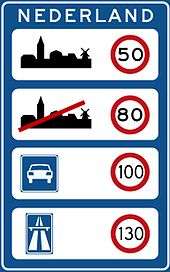 |
 |
 |
 |
 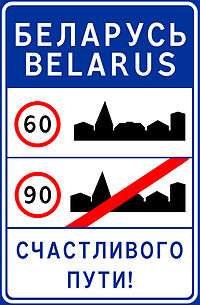 |
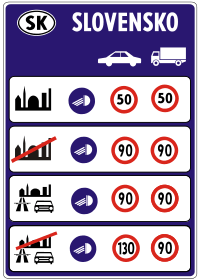 |
 |
 |
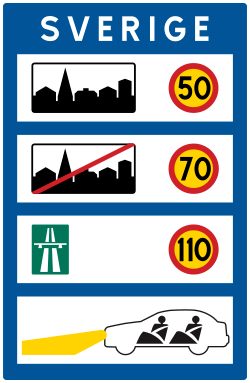 |
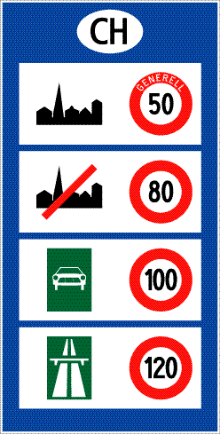 |
 |
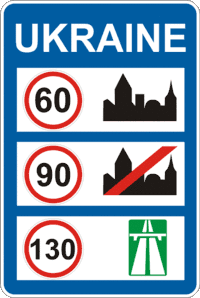 |
 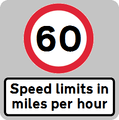 | |||
| Austria | Belgium | Czech Republic |
Denmark | Estonia | Finland | France | Germany | Greece | Hungary | Iceland | Ireland | Italy | Luxembourg | Netherlands | Norway | Poland | Portugal | Romania | Russia & Belarus |
Slovakia | Slovenia | Spain | Sweden | Switzerland & Liechtenstein |
Turkey | Ukraine | United Kingdom |
Built-up Area Limits
Under the Vienna Convention the Begin and End Built-up Area signs imply a change between Built-up Area and Rural traffic rules including speed limit. In many European Countries the dark background with light coloured text version of the sign is intended for information only.[8] Poland uses white text on a green background (E-17a/E18a) to show the political boundary of a place as information and uses the black on white pictogram version (D-42/D-43) to designate the change of traffic rules. [9]
| Austria | Belgium | Czech Republic |
Denmark | Estonia | Finland | France | Germany | Greece | Hungary | Iceland | Ireland | Italy | Luxembourg | Netherlands | Norway | Poland[10] | Portugal | Romania | Russia & Belarus |
Slovakia | Slovenia | Spain | Sweden | Switzerland & Liechtenstein |
Turkey | Ukraine | United Kingdom | |
|---|---|---|---|---|---|---|---|---|---|---|---|---|---|---|---|---|---|---|---|---|---|---|---|---|---|---|---|---|
| Built-up Area Begins |   |
 |
 |
|
 |
RU: BY: |
[note 27] CH: On main roads: On minor roads: LI: On main roads: On minor roads: |
Vienna E7, d all Capitals |  | |||||||||||||||||||
| Place name as information only | RU: BY: |
NOT USED |
||||||||||||||||||||||||||
| End of Built-up Area |   |
 |
 |
|
 |
 |
RU: BY: |
[note 28] CH: [note 29] On main roads: On minor roads: LI: On main roads: On minor roads: |
||||||||||||||||||||
| Austria | Belgium | Czech Republic |
Denmark | Estonia | Finland | France | Germany | Greece | Hungary | Iceland | Ireland | Italy | Luxembourg | Netherlands | Norway | Poland | Portugal | Romania | Russia & Belarus |
Slovakia | Slovenia | Spain | Sweden | Switzerland & Liechtenstein |
Turkey | Ukraine | United Kingdom |
Checkpoints
| Austria | Belgium | Czech Republic |
Denmark | Estonia | Finland | France | Germany | Greece | Hungary | Iceland | Ireland | Italy | Luxembourg | Netherlands | Norway | Poland | Portugal | Romania | Russia & Belarus |
Slovakia | Slovenia | Spain | Sweden | Switzerland & Liechtenstein |
Turkey | Ukraine | United Kingdom | |
|---|---|---|---|---|---|---|---|---|---|---|---|---|---|---|---|---|---|---|---|---|---|---|---|---|---|---|---|---|
| Customs | 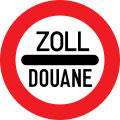 |
.svg.png) |
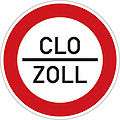 |
 |
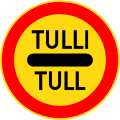 |
 |
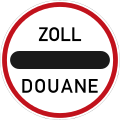 |
 |
 or  |
NOT USED |
NOT USED |
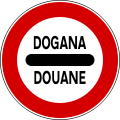 |
 |
.svg.png) or .svg.png) |
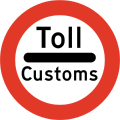 |
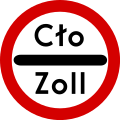 |
 |
 |
 |
 |
 |
 |
 or  |
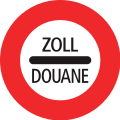 or 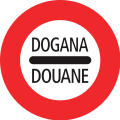 |
 |
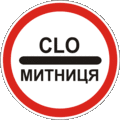 |
NOT USED | |
| Police | NOT USED |
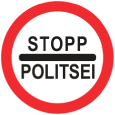 |
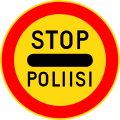 |
 or 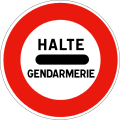 |
 |
NOT USED |
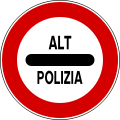 |
NOT USED |
 |
 |
 |
 |
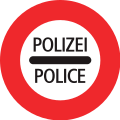 or 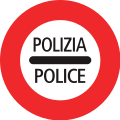 |
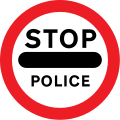 | ||||||||||||||
| Toll |  or  |
NOT USED |
NOT USED |
 |
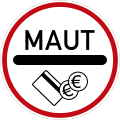 or  |
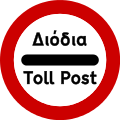 |
 |
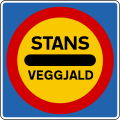 |
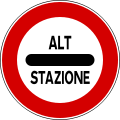 |
NOT USED |
 |
 |
 |
 |
 |
 or  |
NOT USED |
NOT USED | ||||||||||
| Other Control | NOT USED |
 |
 |
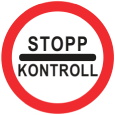 |
NOT USED |
NOT USED |
NOT USED |
 |
 |
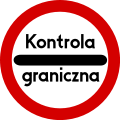 or  |
 |
 |
 |
 |
NOT USED |
NOT USED |
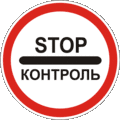 |
NOT USED | ||||||||||
| Austria | Belgium | Czech Republic |
Denmark | Estonia | Finland | France | Germany | Greece | Hungary | Iceland | Ireland | Italy | Luxembourg | Netherlands | Norway | Poland | Portugal | Romania | Russia & Belarus |
Slovakia | Slovenia | Spain | Sweden | Switzerland & Liechtenstein |
Turkey | Ukraine | United Kingdom |
Notes
- ↑ This sign has been replaced by sign no. 4.54 "Announcement of roundabout".
- ↑ This sign is being phased out by 2019, and being replaced by the previous sign. "German Traffic Signs & Signals". January 28, 2010. Archived from the original on 2010-12-07. Retrieved 31 October 2010.
- ↑ In the Netherlands, this sign means "Dangerous crossroads"
- ↑ There is no "priority to the right" (or left) rule in the United Kingdom.
- ↑ The main, upper sign is permanent, but the lower sign is only temporarily added during corresponding condition.
- ↑ Annotated by words in a panel below the sign: German: Nebel, French: brouillard, Italian: nebbia
- ↑ This sign (no. 4.07a) is the announcement of a tunnel; the distance indicated tells the distance to tunnel entrance, not its length. Not to be mismatched with sign no. 4.07!
- ↑ Police work in Switzerland is based on cantonal laws and acts. Usually producing a red warning triangle showing the word, either, German: Unfall, French: accident, or Italian: incidente.
- ↑ Also used as a 'NO ENTRY' sign when used in conjunction with a plate stating some exception such as 'Except for Access'. This sign additionally automatically carries an exemption for cycles being pushed by a pedestrian.
- ↑ This sign can only be used if there are no exceptions. If an exception is to granted, then the 'prohibited all vehicles' sign above should be used with a plate specifying the exemptions (for example: "Except Busses"). Technically, this sign means 'NO ENTRY' to any wheeled vehicle including cycles being pushed (but not cycles being carried), perambulators, wheeled buggies and even wheelchairs. The last three prohibitions are seldom, if ever, enforced.
- 1 2 3 Always also implies mopeds with a maximum design speed of 25 km/h
- ↑ The Traffic Signs Regulations and General Directions 2002 emphasises that enforcement of this sign is not specifically supported by any statutory regulation. However this does not prevent a cyclist from being prosecuted under the Town Police Clauses Act, 1847. The cyclist can also be prosecuted under the Offences Against the Person Act, 1861 (as amended by the Criminal Justice Act 1948) if anyone is injured as a result of the cyclist's presence. Both of these Victorian Acts provide for terms of imprisonment for their infringement.
- ↑ Prohibition of large goods vehicles (with total weight larger than 3.5 t, including any load).
- ↑ The weight shown on the vehicle is the maximum permitted weight of the vehicle excluding any load
- ↑ This sign has been replaced by sign no. 4.14 "Hospital", since it was only used in this context!
- ↑ The words indicate the structure that the vehicle is prohibited from (in this case a bridge). The weight shown is in (metric) tonnes.
- ↑ Applies also to axles being apart not more than 1 metre.
- ↑ Not the end of maximum speed limit but the start of the national speed limit, which for normal cars without a trailer is 60 mph for single carriageway roads or 70 mph for dual carriageway roads (including motorways)
- ↑ Always produced on non-urban roads, in urban settings only, if badly visible; mandatory priority given to pedestrians – always applicable on any pedestrian crossings even without sign.
- ↑ The white sign is used in built-up areas and the blue one outside them.
- ↑ Indicates hospital with emergency station open 7/24.
- ↑ Means only presence of hospital, rest home, or the like. Is an educated indication to be quiet and to drive carefully.
- ↑ The yellow sign is used for local bus traffic and the blue one for long-distance bus traffic.
- ↑ In the Netherlands, the first one is always used because otherwise it wouldn't be an official bus stop. The bottom one is sometimes used to inform drivers a bus stop is coming up, mostly outside the built-up area.
- ↑ The background is green on motorway, blue on other road
- ↑ This sign (no. 4.07) is produced at the beginnng of a tunnel; if accompanied with sign no. 5.03 (length indication), it indicates the length of the tunnel, not the distance to the tunnel, as done by sign no. 4.07a!
- ↑ The presence of an entry sign of a town or village always implies a generally valid speed limit of 50 km/h even without the precence of sign no. 2.30.1! It ends only with the exit sign of a village or town (sign no. 4.28 or 4.30).
- ↑ The presence of an exit sign of a town or village always implies the end of the generally valid speed limit of 50 km/h even without the precence of sign no. 2.53.1.
- ↑ The name above the horizontal line is the name of the next village or town (not the name of the current place!), the name(s) below the line mention the next major settlement(s), and optionally, the distance to them.
See also
References
- European Standard for Traffic Signs - EN 12899-1:2001 Fixed, Vertical Road Traffic Signs – Part 1: Fixed Signs, Requirements
- ↑ http://etd.lib.metu.edu.tr/upload/12612722/index.pdf
- ↑ http://www.fuerboeck.at/verkehrsrecht/verkehrszeichen/hinweis/wegweiser-lokal/
- ↑ Österman, Tuomas; Miettinen, Saija; Ronkainen, Kaisa (2005). "Opastusmerkkien luettavuus" (PDF). Helsinki: Tiehallinto. Retrieved 31 July 2011.
- ↑ Útügyi műszaki előírás, e-ÚT 04.02.12.
- ↑ "Traffic Type Spain D - Desktop font « MyFonts". Myfonts.com. 1999-02-22. Retrieved 2012-11-09.
- ↑ "SR/RS 741.21 (Signalisation Act, SSV/OSR/OSStr) Art. 45 (Signalisation of Special Roads) para 3" (Swiss federal laws) (in German, French, and Italian). Berne, Switzerland: Swiss Federal Council. 15 January 2017. Retrieved 2018-03-02.
Das Signal steht am Eingang des Tunnels sowie zusätzlich als Vorsignal (Art. 44 Abs. 3) [The signal is located at the entrance of the tunnel and additionally as a pre-signal (Art. 44 para. 3)]
- ↑ "SR/RS 741.21 (Signalisation Act, SSV/OSR/OSStr) Art. 45 (Signalisation of Special Roads) para 3" (Swiss federal laws) (in German, French, and Italian). Berne, Switzerland: Swiss Federal Council. 15 January 2017. Retrieved 2018-03-02.
Das Signal steht am Eingang des Tunnels sowie zusätzlich als Vorsignal (Art. 44 Abs. 3) [The signal is located at the entrance of the tunnel and additionally as a pre-signal (Art. 44 para. 3)]
- ↑ "Vienna Convention on Road Signs and Signals - unece" (PDF). United Nations Economic Commission for Europe (UNECE). UNITED NATIONS. Retrieved 12 July 2018.
- ↑ "Rozporządzenie Ministrów Infrastruktury oraz Spraw Wewnętrznych i Administracji z dnia 31 lipca 2002 r. w sprawie znaków i sygnałów drogowych". prawo.sejm.gov.pl. Polish Parliament. Retrieved 12 July 2018.
- ↑ "Rozporządzenie Ministrów Infrastruktury oraz Spraw Wewnętrznych i Administracji z dnia 31 lipca 2002 r. w sprawie znaków i sygnałów drogowych". prawo.sejm.gov.pl. Polish Parliament. Retrieved 12 July 2018.
External links

